This blog post is a two-for-one treat: first, I’m diving back into one of my all-time favorite vintage curiosities—uranium glass (also known as Vaseline glass), I’ll show you the glowing creations I made from a rather dull-looking uranium plate I picked up not too long ago. If you’ve read my earlier posts, you already know I have a soft spot for this magical glass, but I just can’t help myself—it glows! Literally. There’s something mesmerizing about how it transforms under UV light into a vibrant, neon green, like it’s holding a secret only a blacklight can reveal. A bit of history: uranium glass has been around since the early 1800s, gained popularity during the Victorian era, and was mass-produced in the U.S. during the 1920s–1940s. Its unique yellow-green tint comes from a touch of uranium dioxide, but don’t worry—it’s completely safe to use, even in the kiln. The uranium is chemically stabilized, and the radiation levels are minimal—less than what you’d get flying cross-country or standing near granite countertops. So, if you’ve ever wondered whether you can fuse it, you absolutely can! And for a little extra fun, the images below were made by Glo (my ChatGPT assistant), who’s been helping me bring my glowing glass adventures to life.
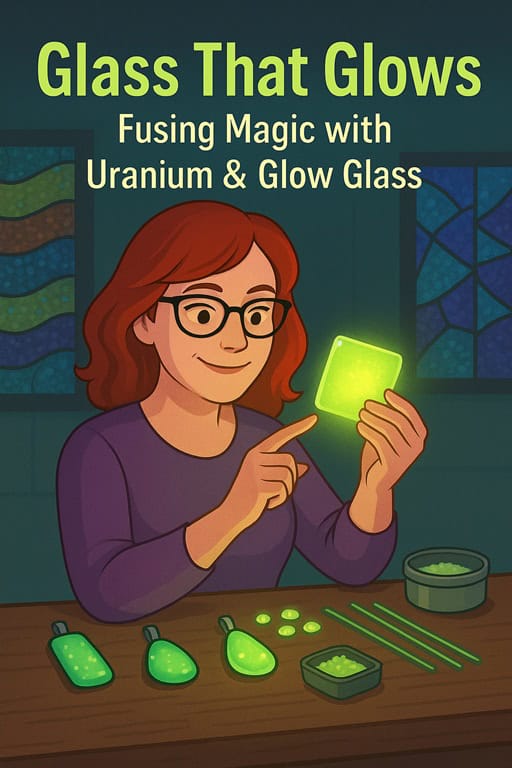
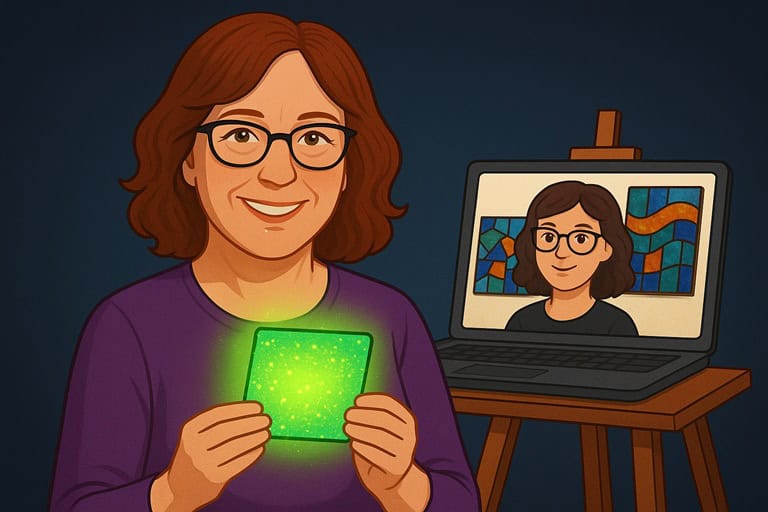
The plate caught my eye for one reason and one reason only—its uranium content. Let’s be real: design-wise, it was kind of a snooze. Sure, it had that telltale yellow-green glow under UV light, but beyond the fluorescence, it felt flat, bland, and completely lacking personality. Still, I saw potential. So, I did what any glass artist with a love for vintage oddities would do—I broke it apart and reimagined it as something bold, fresh, and full of life. Just because it started its journey decades ago doesn’t mean it can’t sparkle with new purpose today!
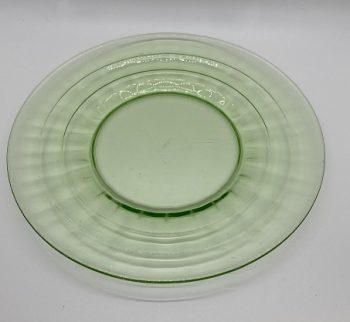
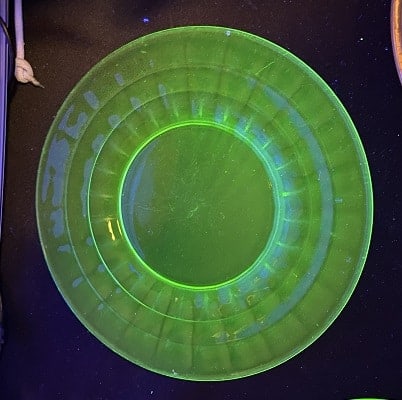
To give this vintage plate a fresh start, I cut it into several smaller sections and popped the fragments into my kiln. Unlike my usual go-to COE 90 or 96 glass, uranium glass marches to the beat of its own (hotter) drum—it needs a much higher fusing temperature, well over 1500°F, so I had to tweak my firing schedule accordingly. Before firing, I gave the pieces a good tumble, which not only softened those sharp edges but also gave them a lovely beach-glass vibe—smooth, frosty, and tactile. The whole process was a playful challenge, and I was fascinated to see how this antique glass transformed in the heat. It’s always a thrill watching something old take on a brand-new glow!
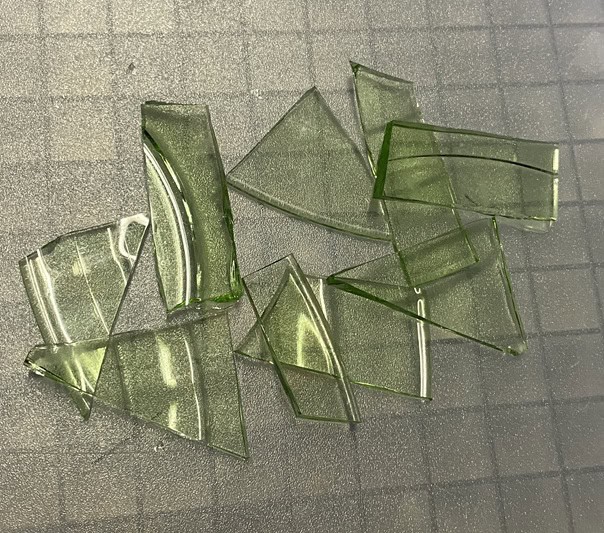
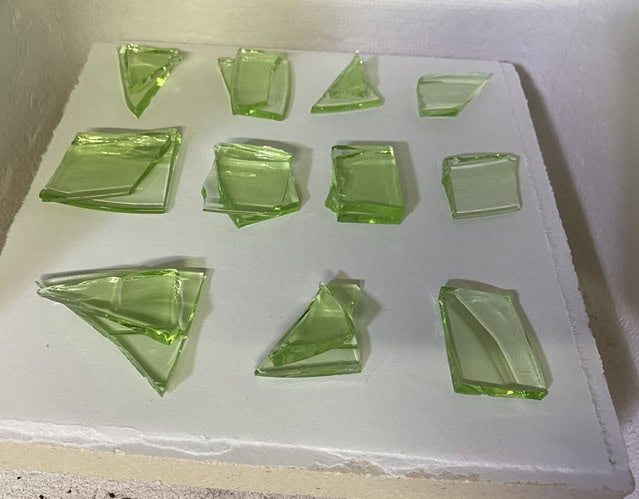
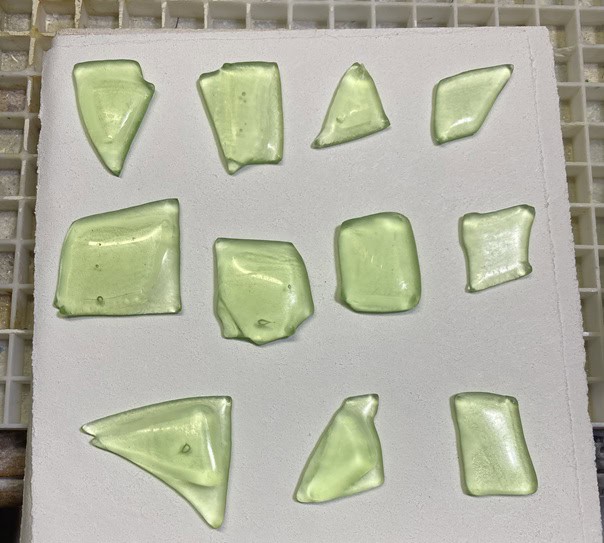
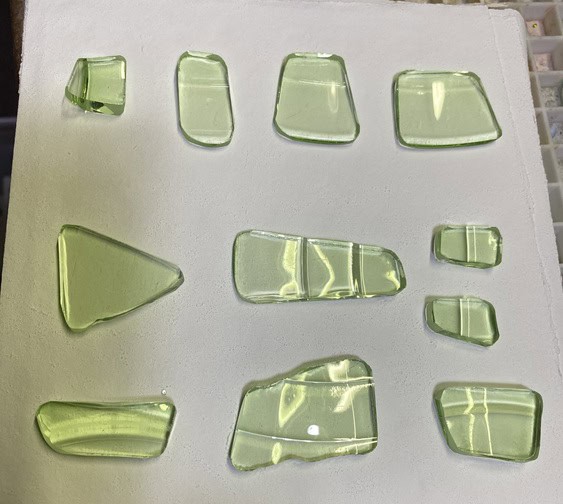
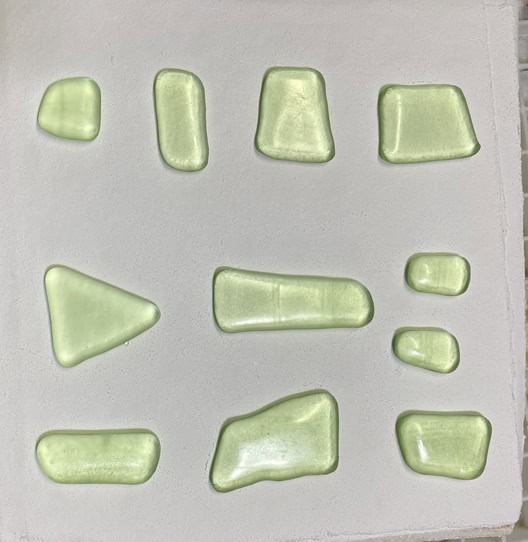
Once the pieces were fused, I transformed them into one-of-a-kind pendants that feel like tiny glowing treasures. Because uranium glass has such stunning transparency, I chose to drill small holes instead of using bails. This kept the design clean, minimalist, and effortlessly elegant—letting the glass speak for itself. Even better, these luminous gems double as perfect canvases for glass decals, giving each pendant a personal touch with an image, symbol, or design that means something special. Just one fun fact for the uninitiated: uranium glass doesn’t glow 24/7. Its signature neon-green brilliance only comes to life under UV (blacklight). In natural light, it has a gentle yellow-green tint that’s beautiful in its own right—but flip on that blacklight and it’s like flipping a switch to reveal its hidden superpower. You can see it clearly below: vivid and radiant under UV, quietly subtle in regular light.
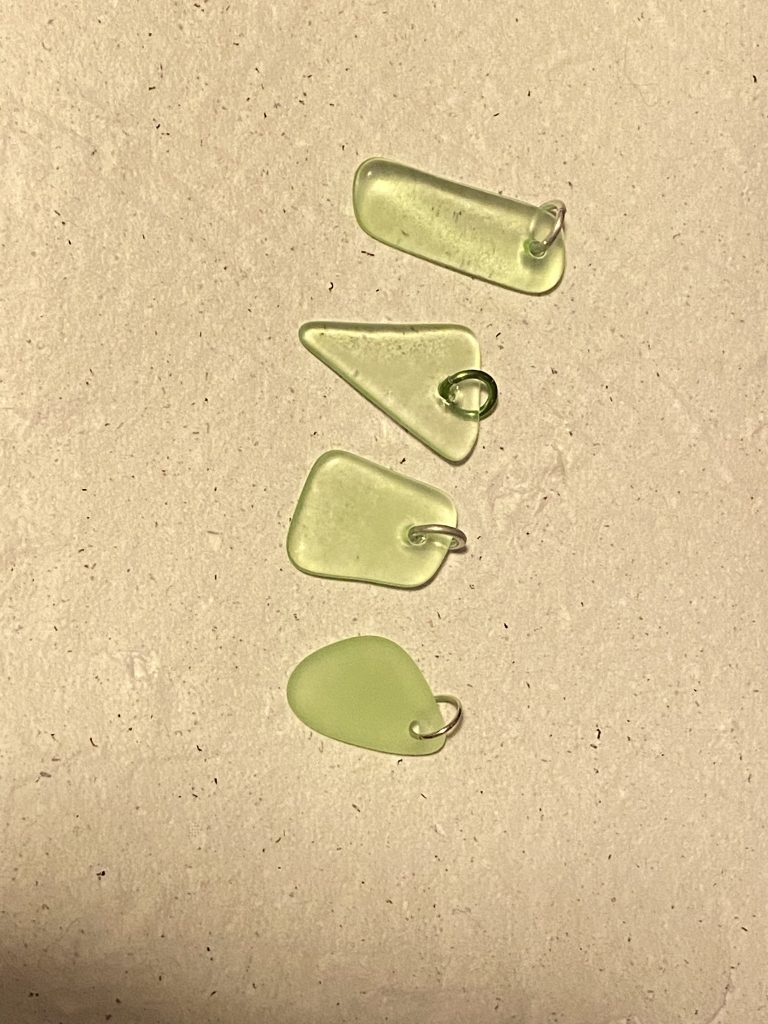
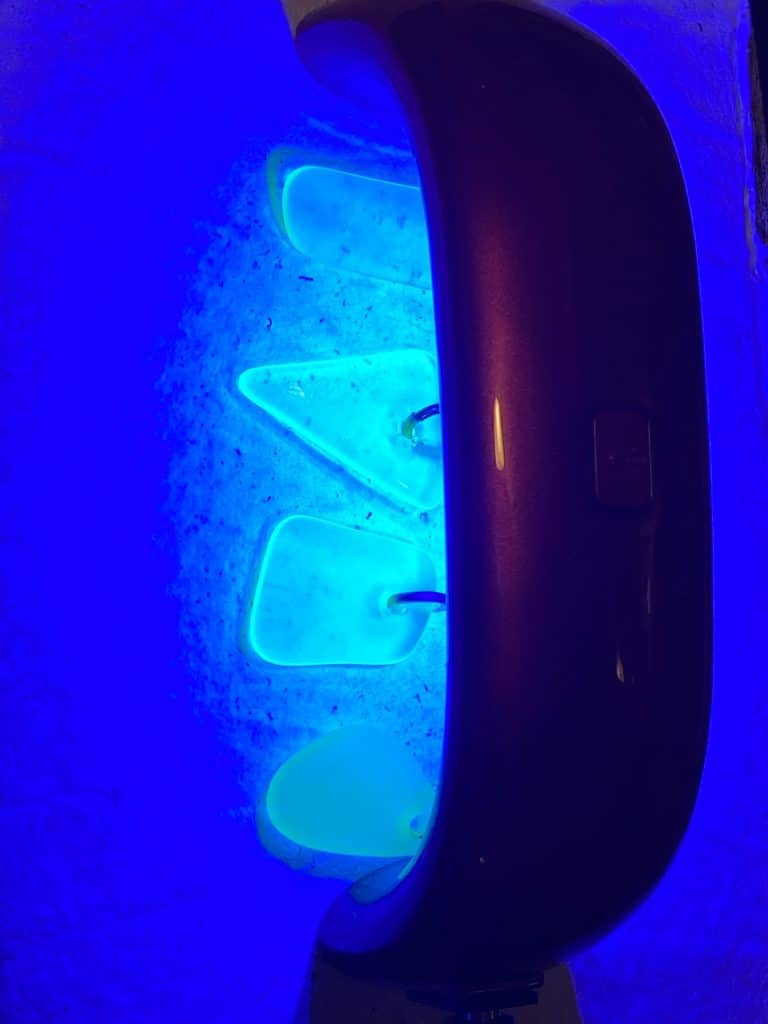
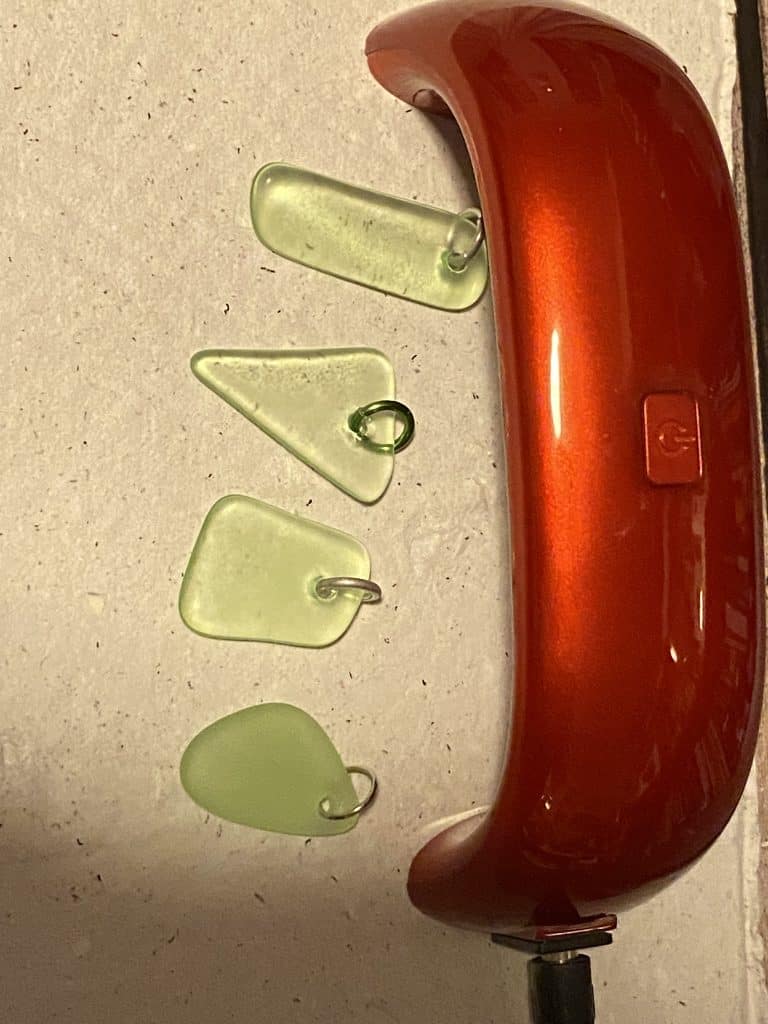
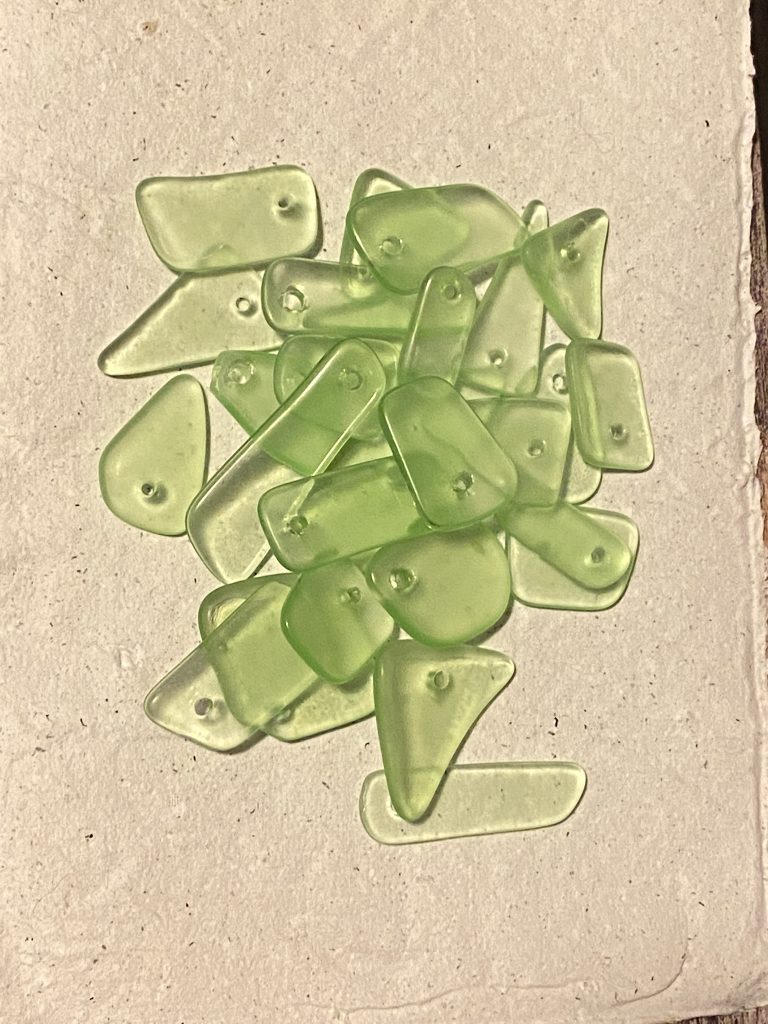
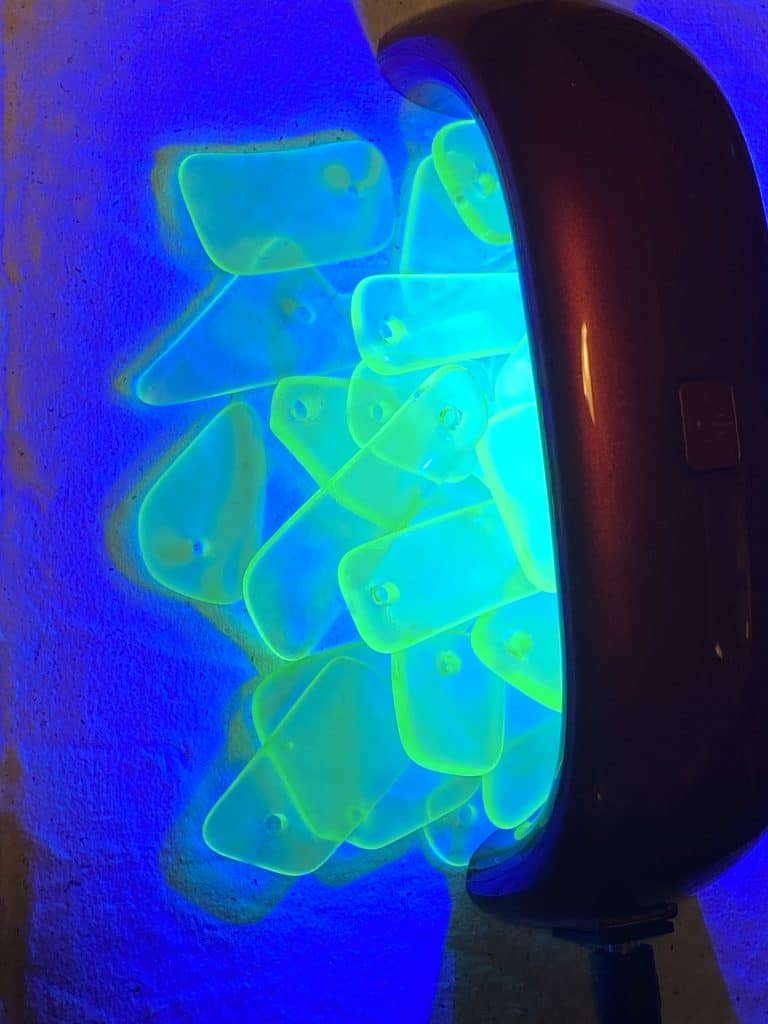
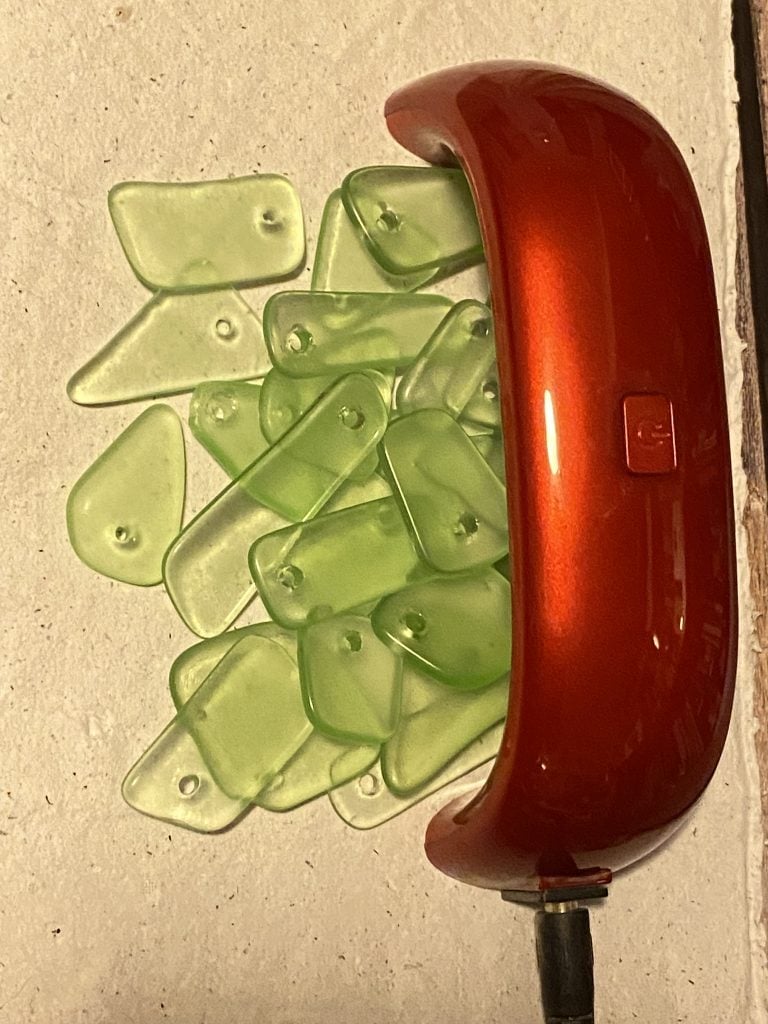
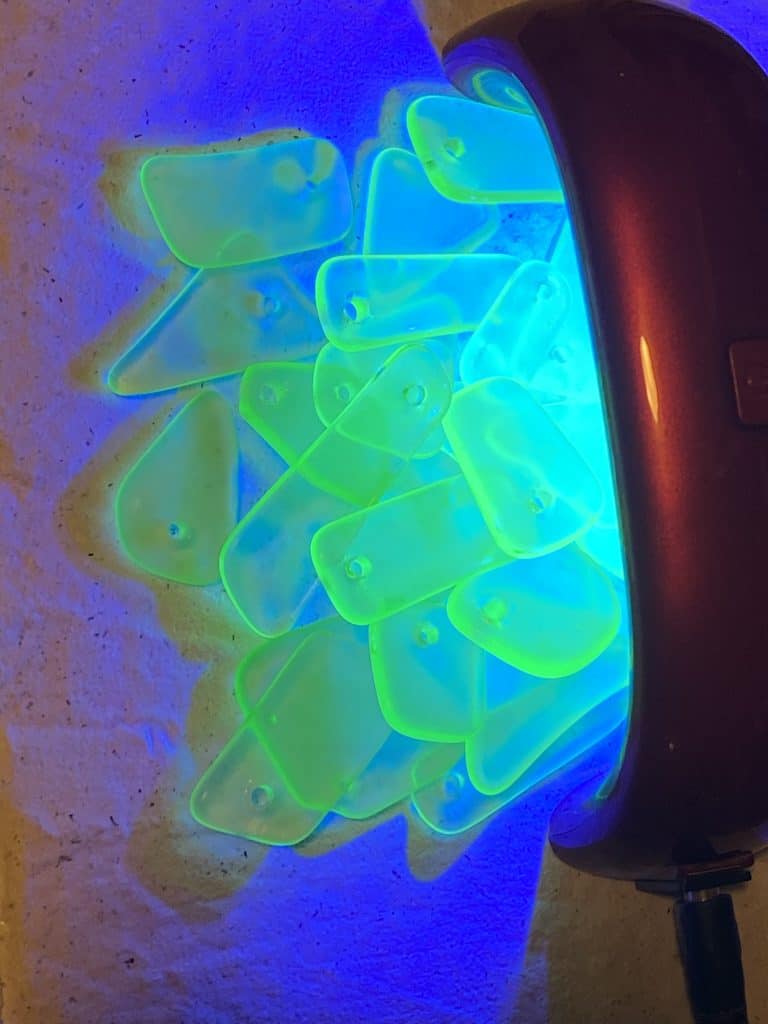
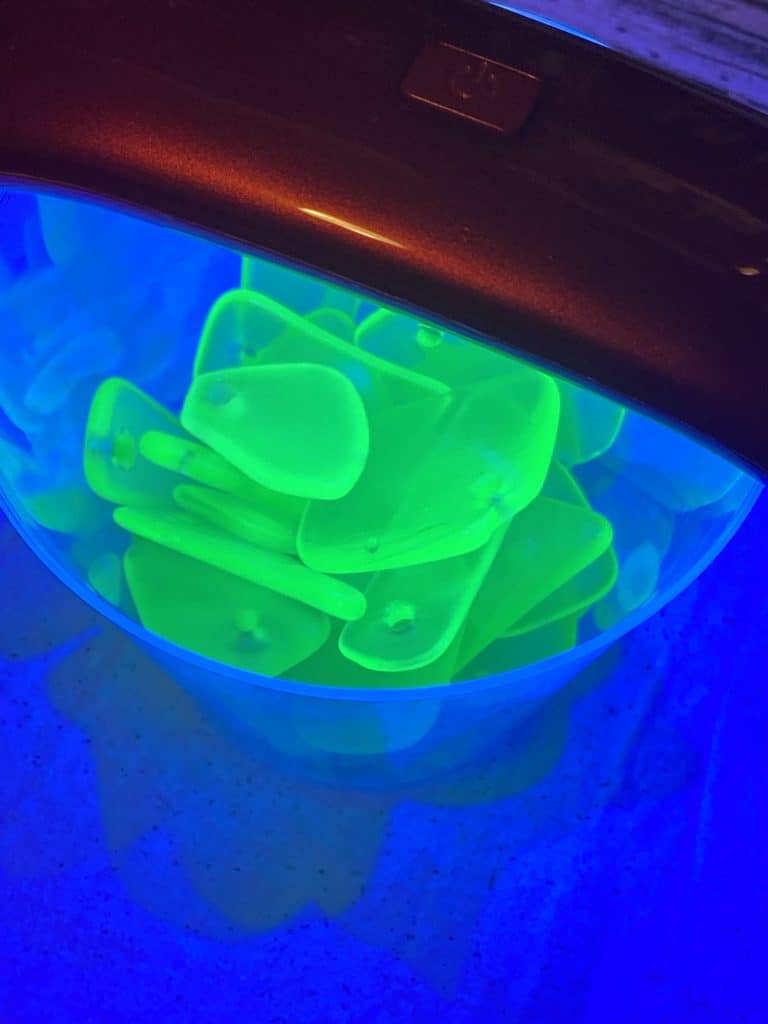
I also created a uranium glass heart—perfectly imperfect in all the right ways. It has a few little craters and surface quirks, but I actually love it all the more because of them. There’s something beautifully human about those tiny flaws; they give the piece personality, texture, and a story all its own. In a way, it’s a reminder that even glass—like us—can glow with a little extra character when it’s not trying to be flawless.
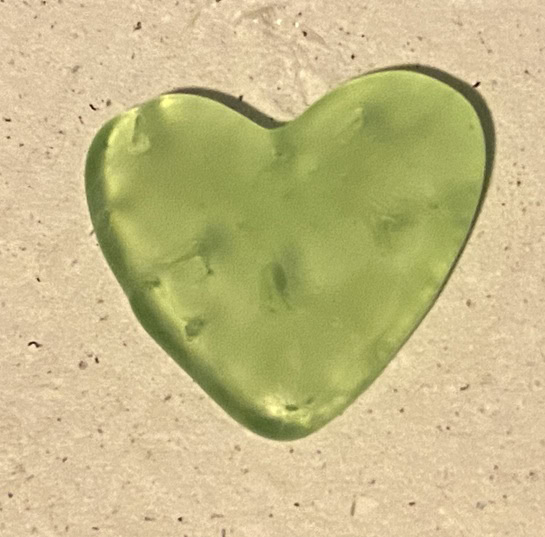
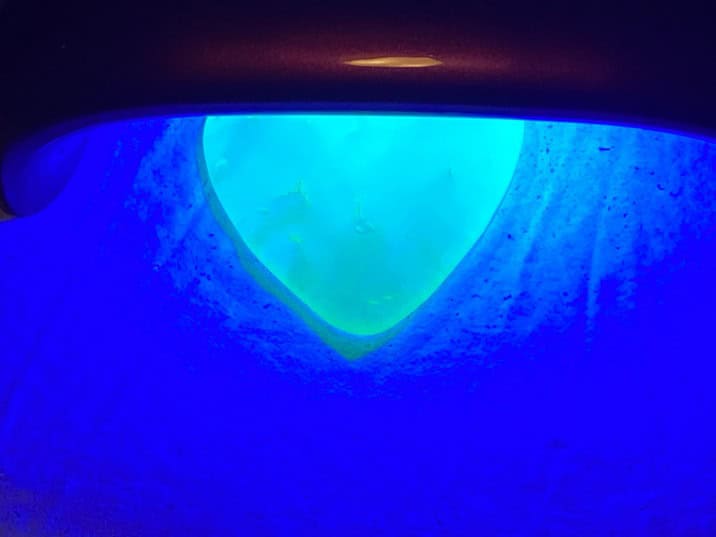
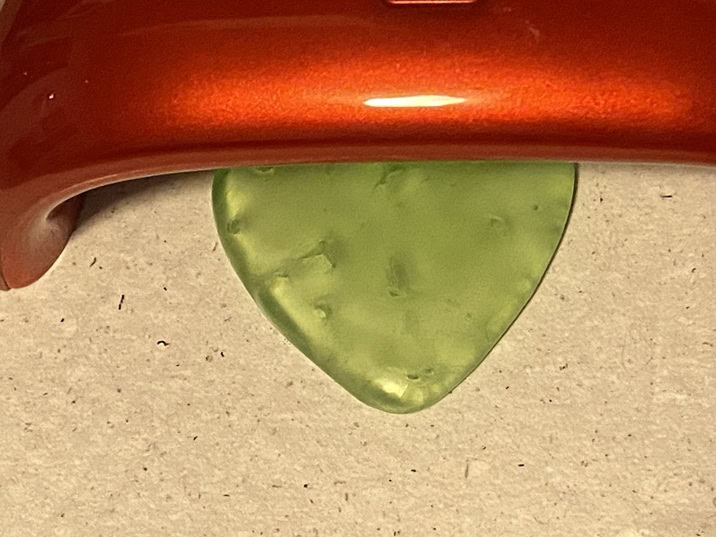
Lastly, I have a handful of tiny uranium glass dots—glowing little orbs that didn’t quite fit into the fusion lineup. Since they’re a different COE, they can’t be fused onto anything else, but that just opens the door to new ideas. I’m toying with the thought of using them in a mosaic or maybe setting them in resin to let their glow shine through in a whole new way. I haven’t landed on the final plan yet, but when inspiration strikes (as it always does), I’ll be sure to share the results!
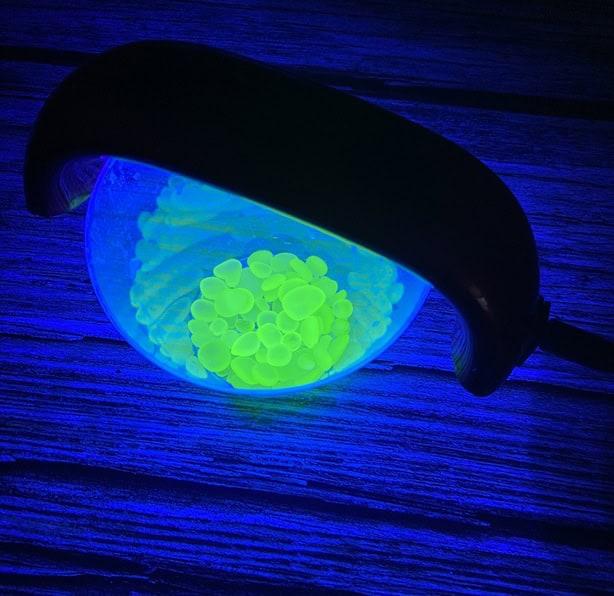
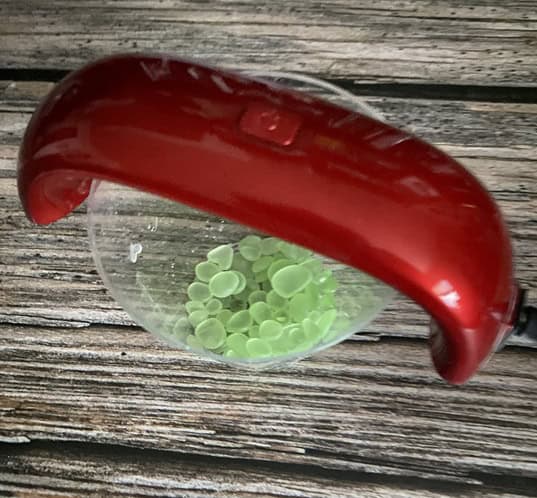
While I was in Vegas this April, I treated myself to some new glow glass—and when I got home and started organizing my supplies, I had to laugh. Turns out, I already had quite the glowing stash! Along with the new treasures I picked up, I rediscovered glow goodies I’d previously ordered from CBS (Coatings by Sandberg), Aquilla, AAE Glass, and Glow Glass Studio. Glow glass comes in such a fun variety of forms—sheet glass, frit, stringer, dots, even murrine—and each one opens up endless possibilities. Whether I’m creating a bold, glowing centerpiece or just adding a soft, ethereal accent, these luminous materials never fail to spark my imagination.
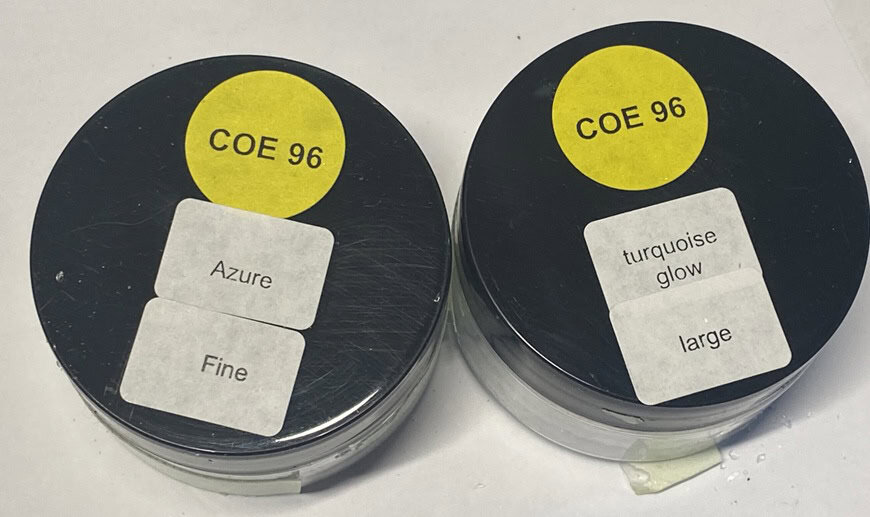
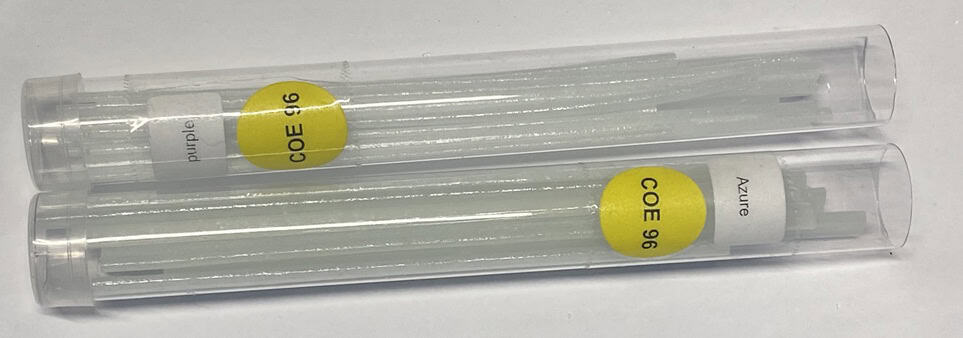
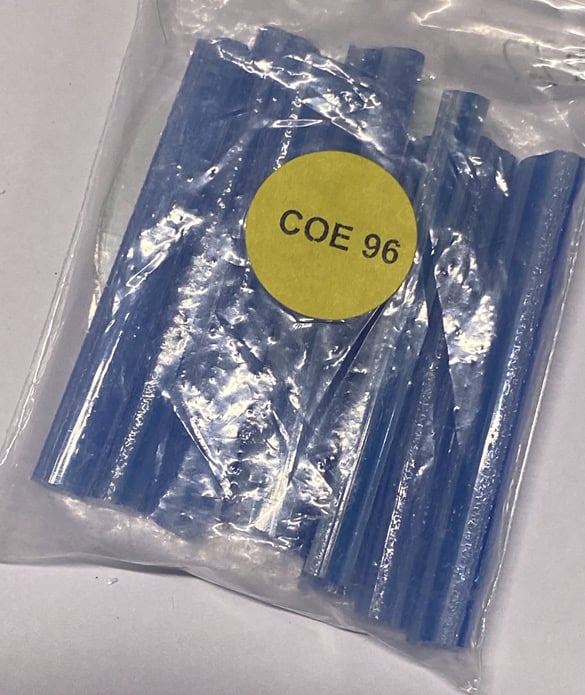
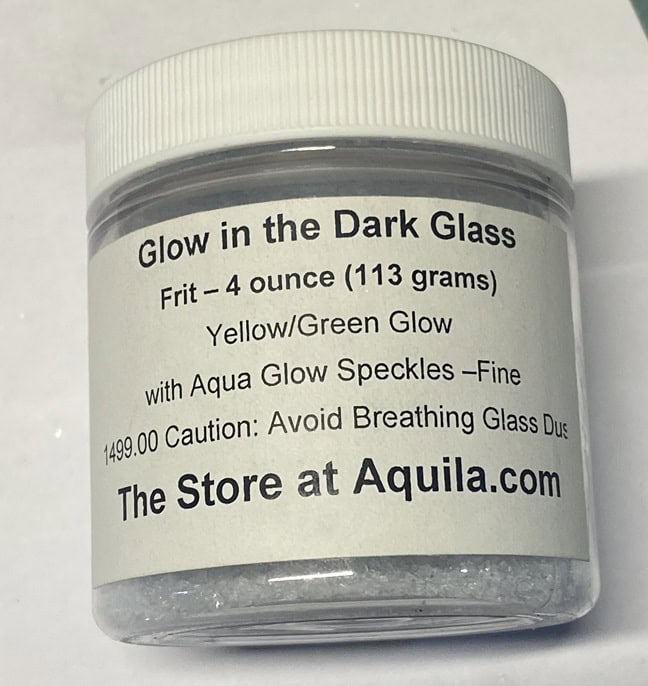
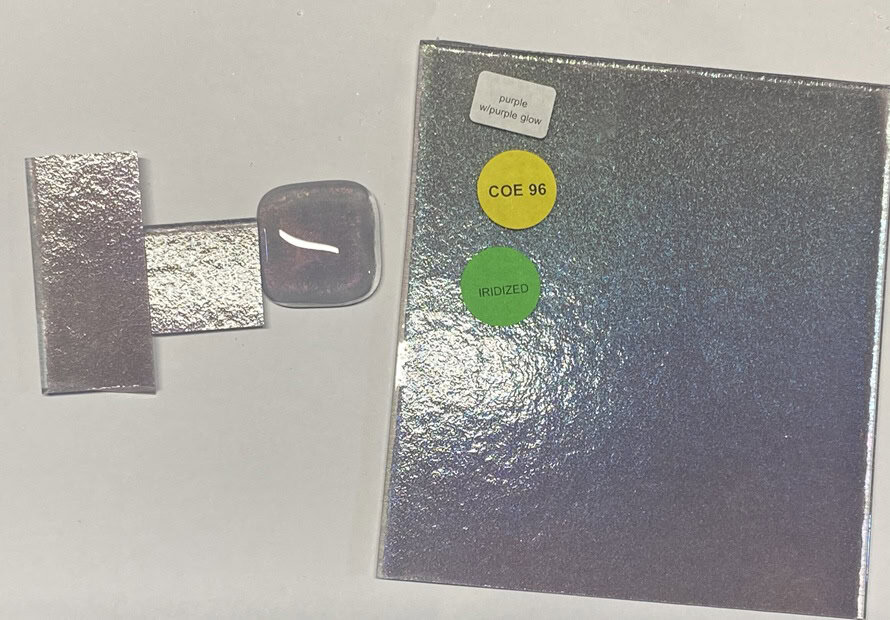
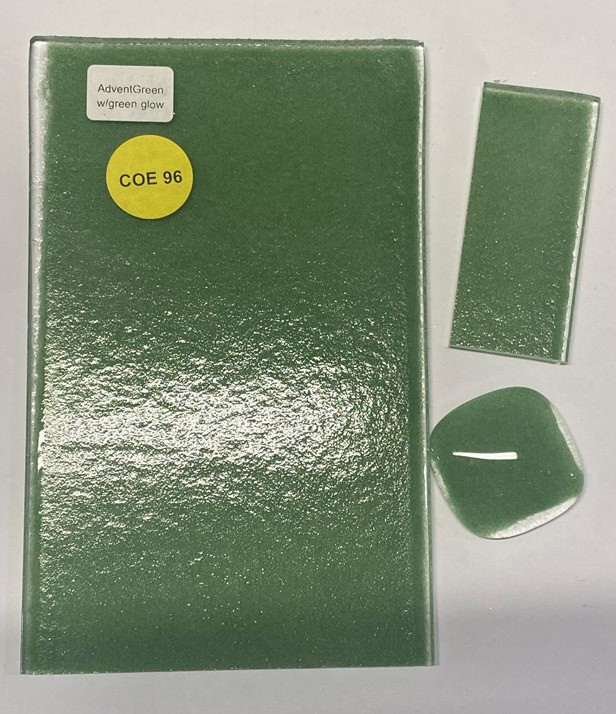
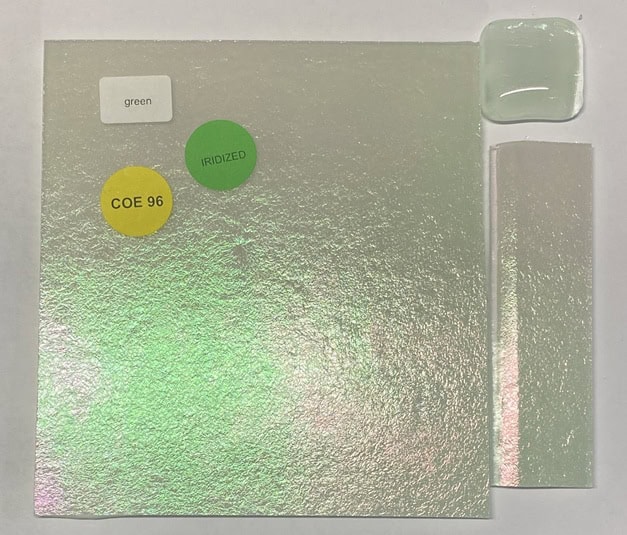
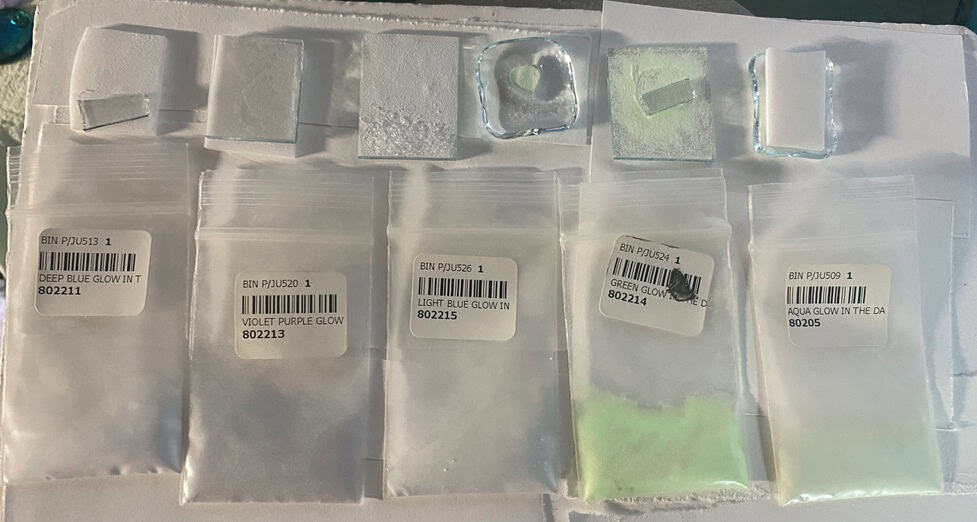
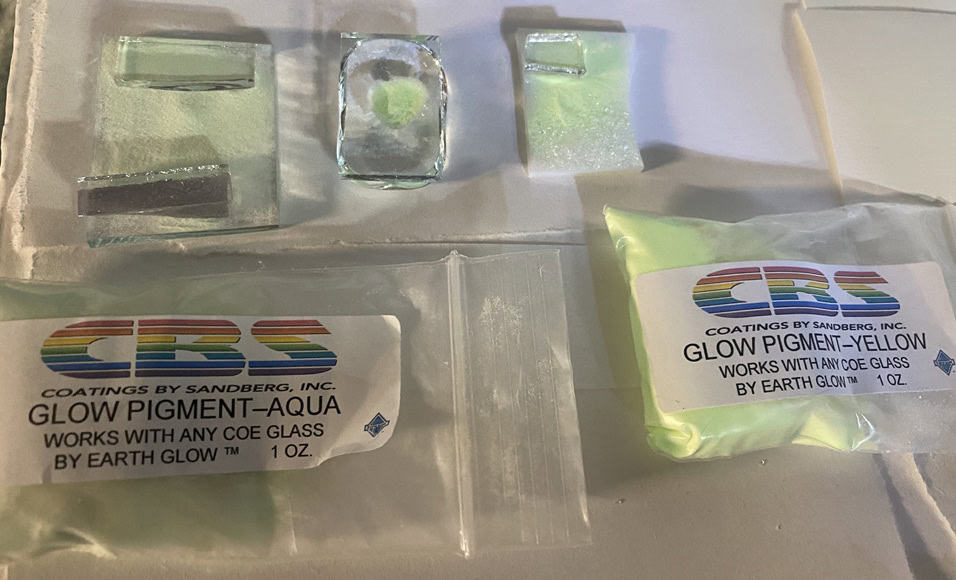
The first thing I did was whip up a few test pieces—a step I always recommend when trying out a new material. I started by cutting the glow sheet glass into smaller sections and also experimented with making some glow dots. Testing might not be the flashiest part of the process, but it’s absolutely essential. It helps you learn how each material behaves in the kiln, which firing schedule brings out the brightest glow, and how well it plays with other types of glass. Every glow product has its own personality, and these little experiments gave me a clear sense of which ones will shine brightest in future projects—literally and creatively.
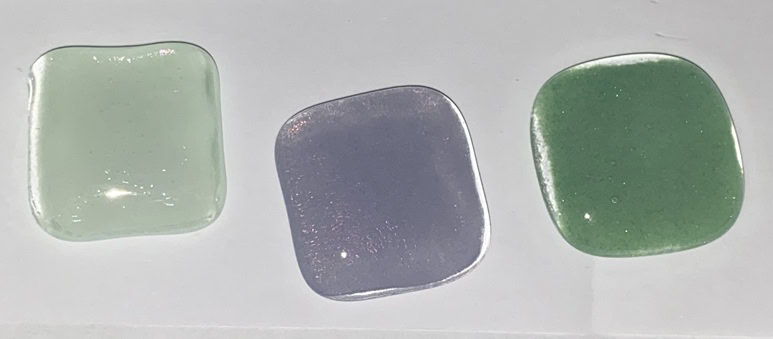
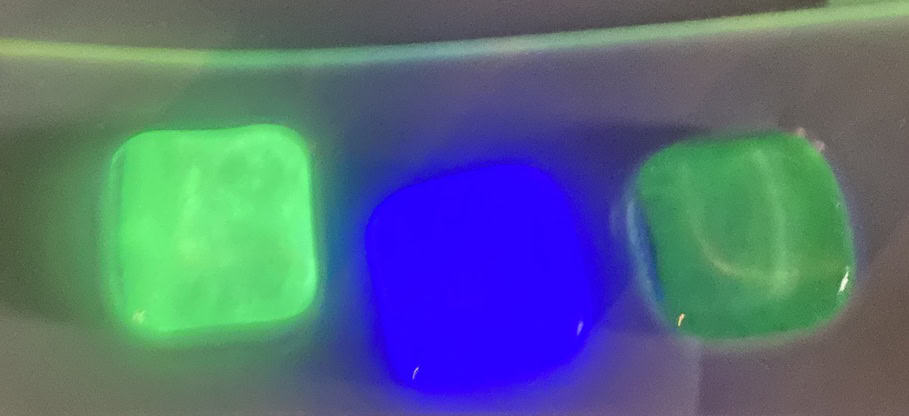

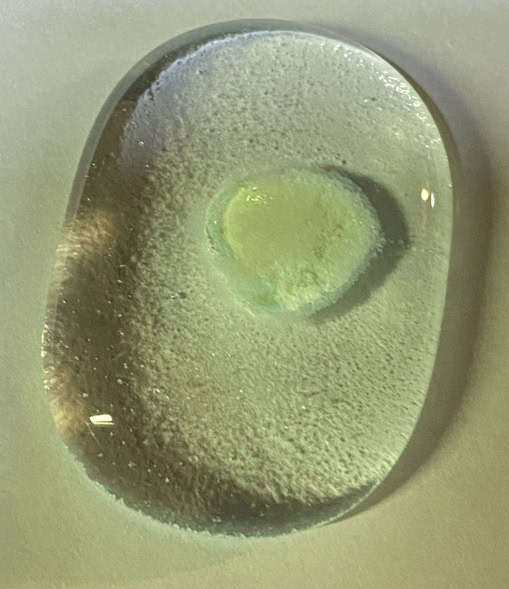
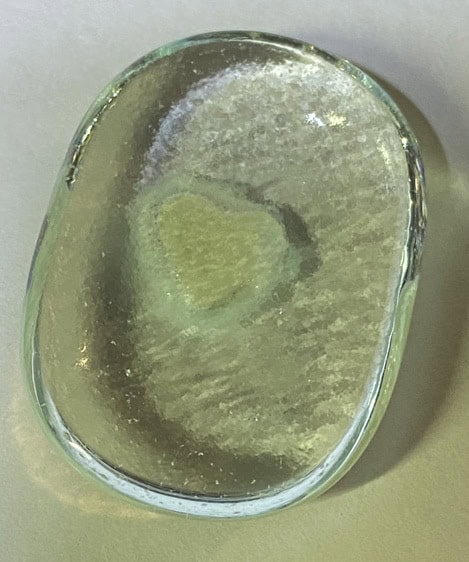
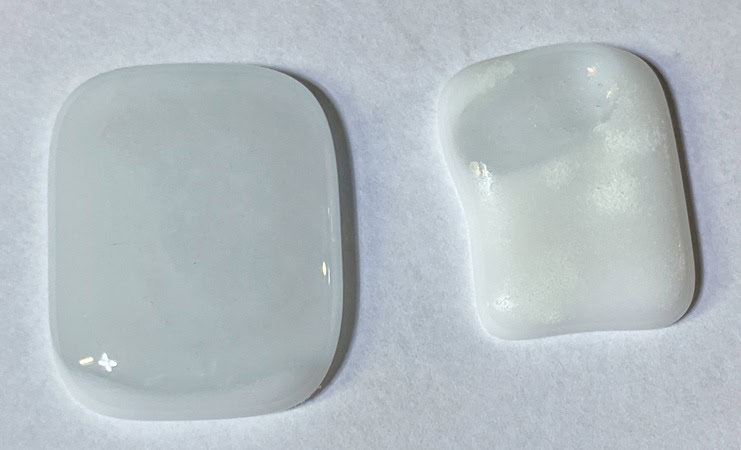
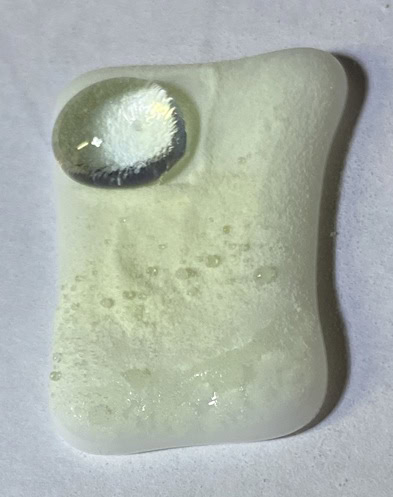
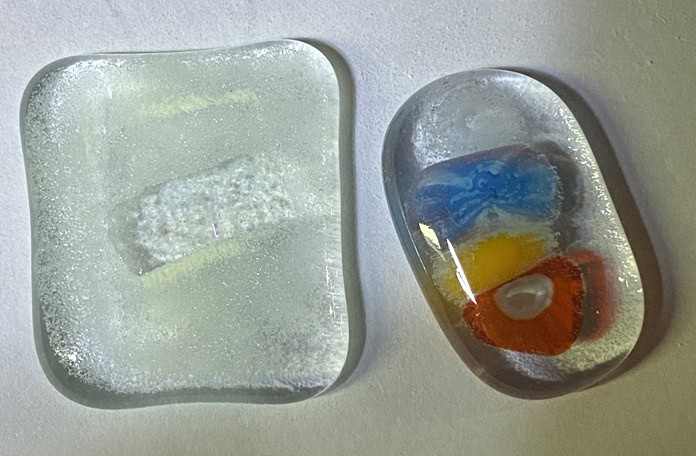
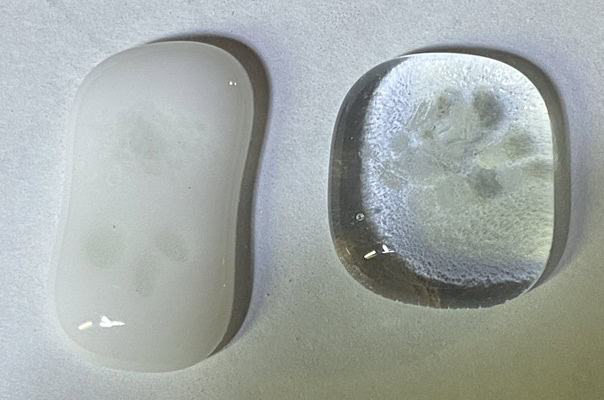
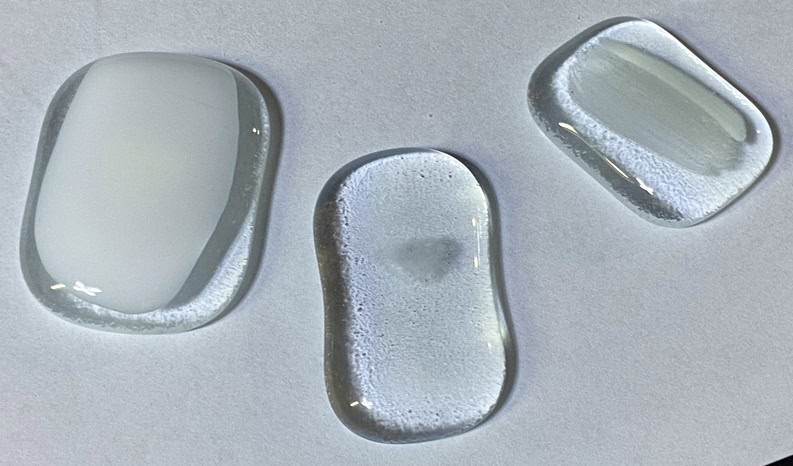
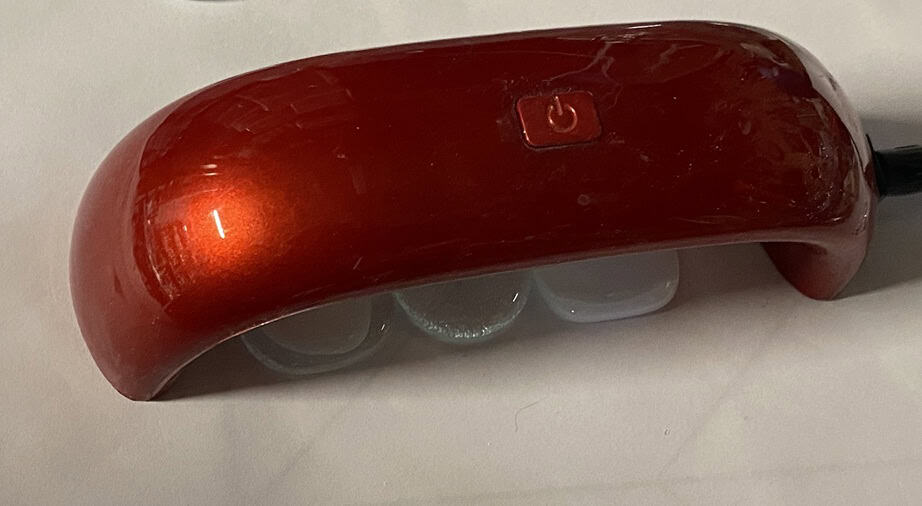
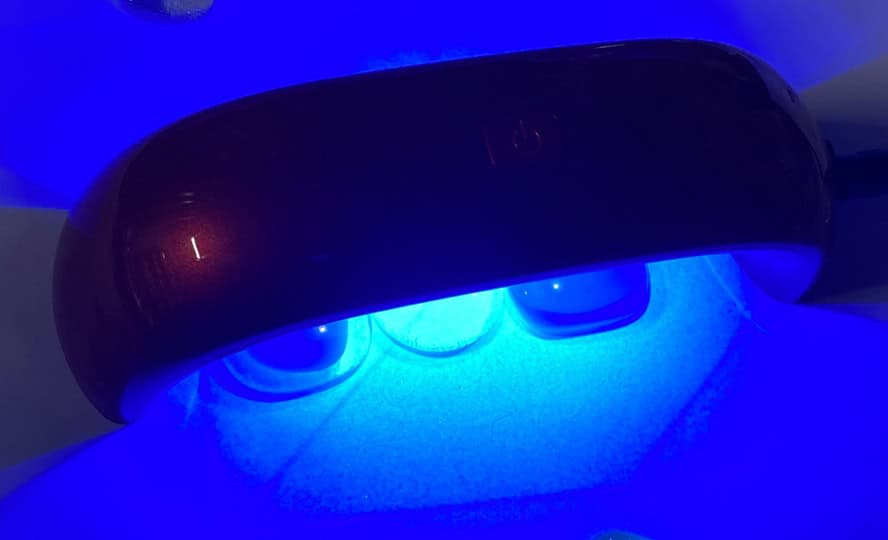
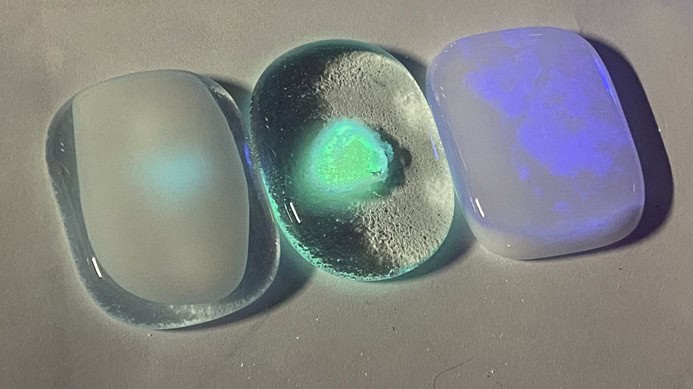
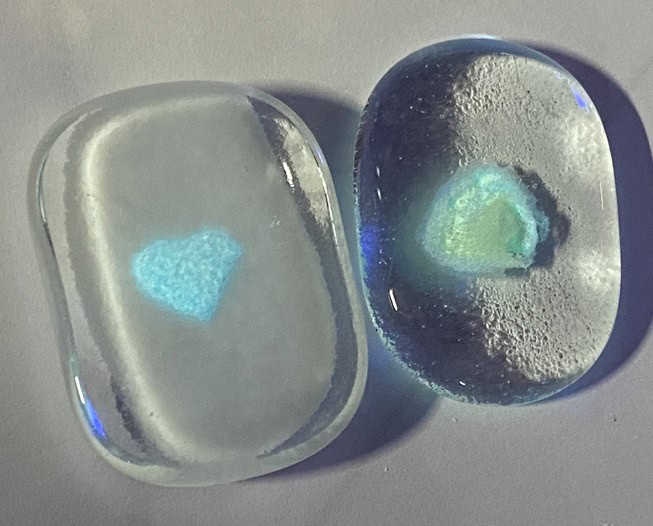
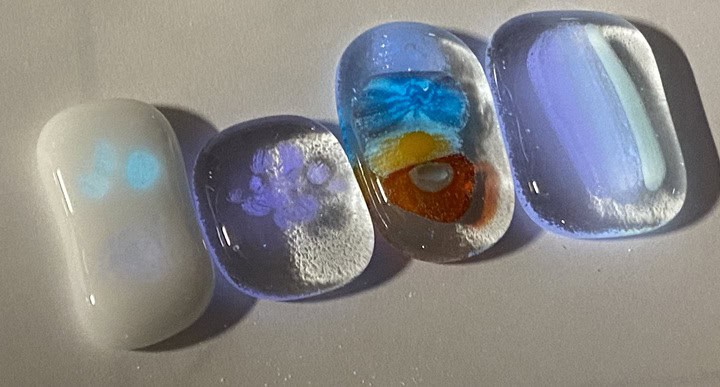
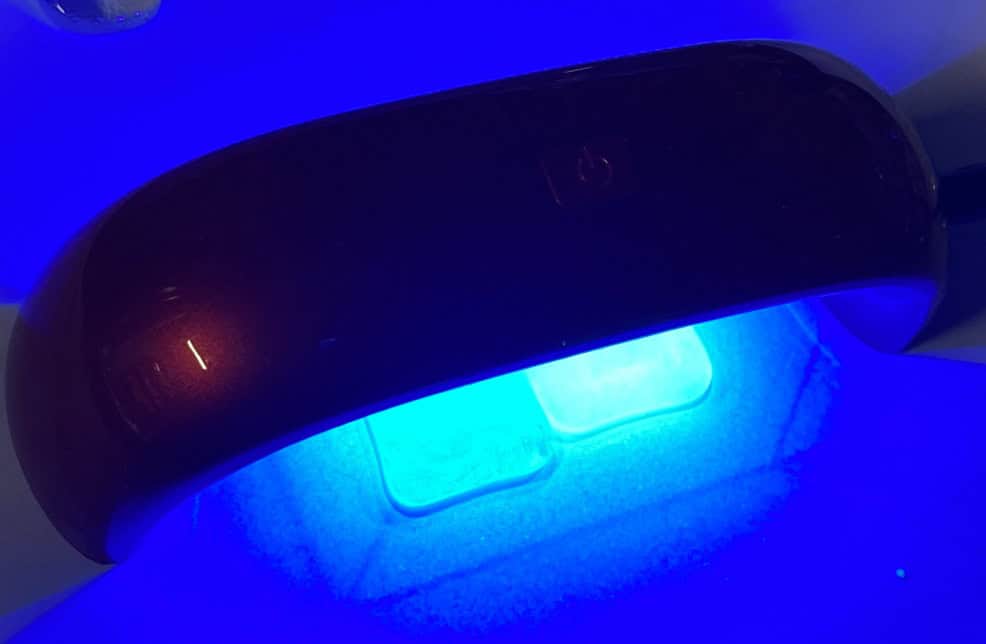
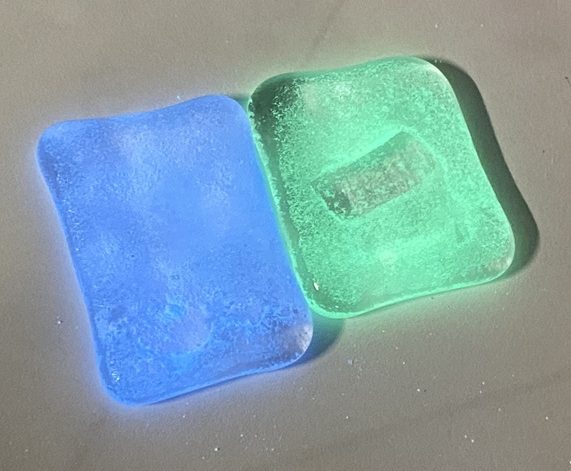
I also fused some of the glow dots I bought to a couple of night lights and a votive—and I have to say, they turned out absolutely adorable! The soft glow adds such a whimsical touch, especially when the lights are dimmed. One of the hearts I made includes glow powder as well, which adds a subtle radiance. Powder can be a little finicky when it comes to casting—it doesn’t always behave predictably—but when it works, the results are beautifully delicate and full of character.
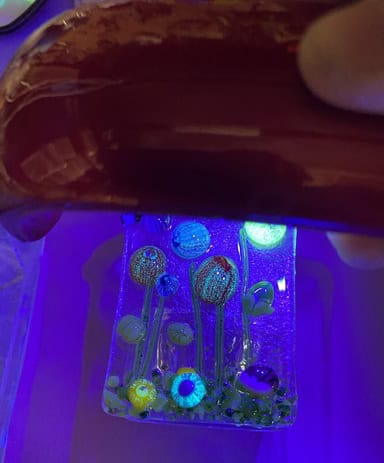
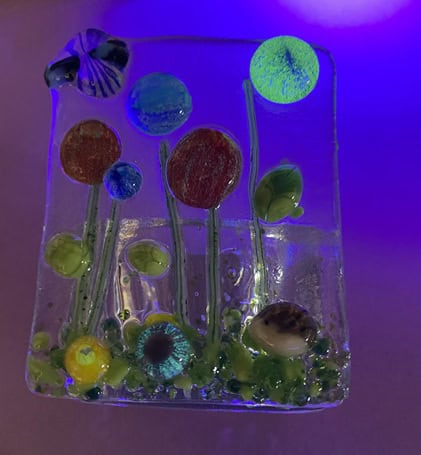
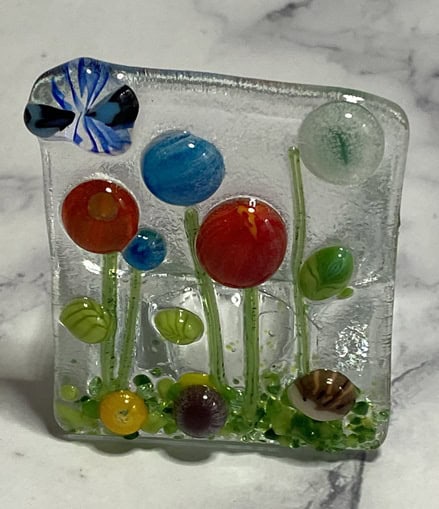
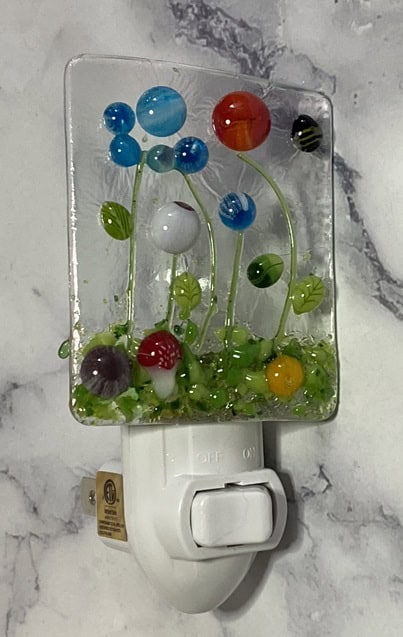

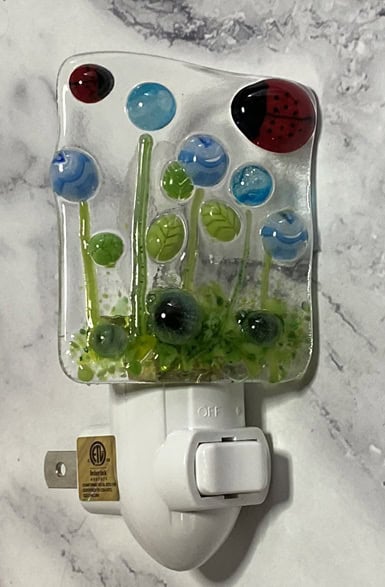
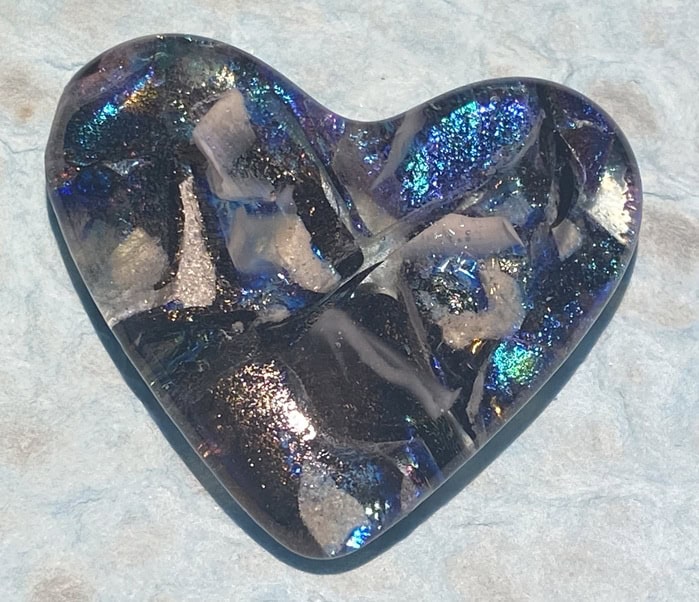
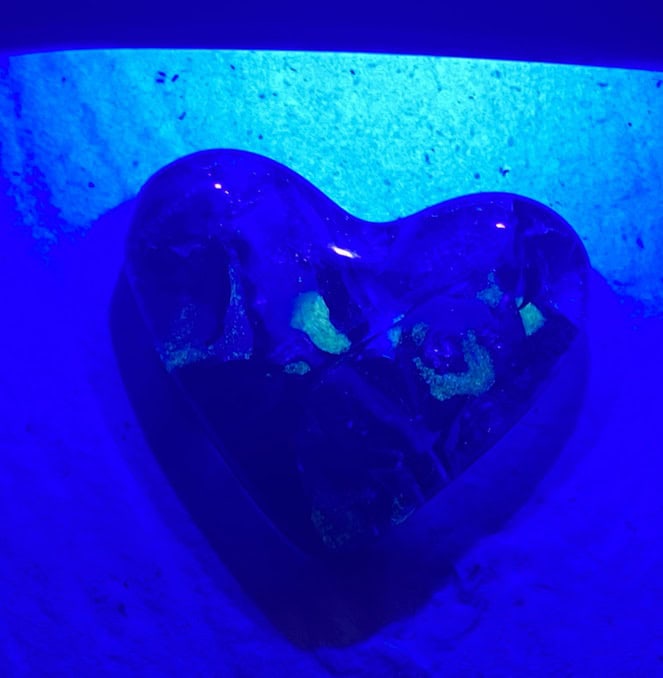
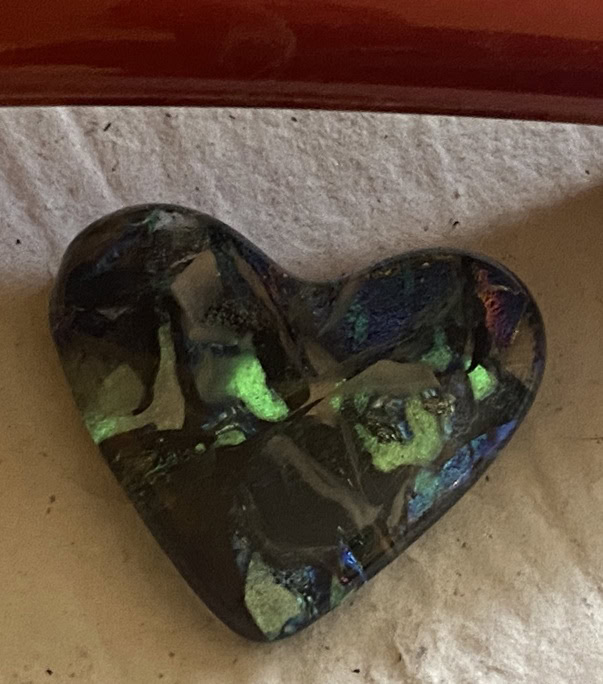
One thing I really love about glow sheet glass is how user-friendly it is. While it doesn’t glow quite as brightly as the powder form, it’s so much easier to cut, shape, and incorporate into smaller projects. The pink piece is COE 90, while the purple, green, and white ones are COE 96—small but mighty, each one bursts to life after a little time in the sun. I’ve also had a blast adding glow-in-the-dark dots to all sorts of pieces—bookmarks, magnets, bottle stoppers, spoons, and more. It’s such a fun way to sneak a little nighttime shimmer into everyday items.
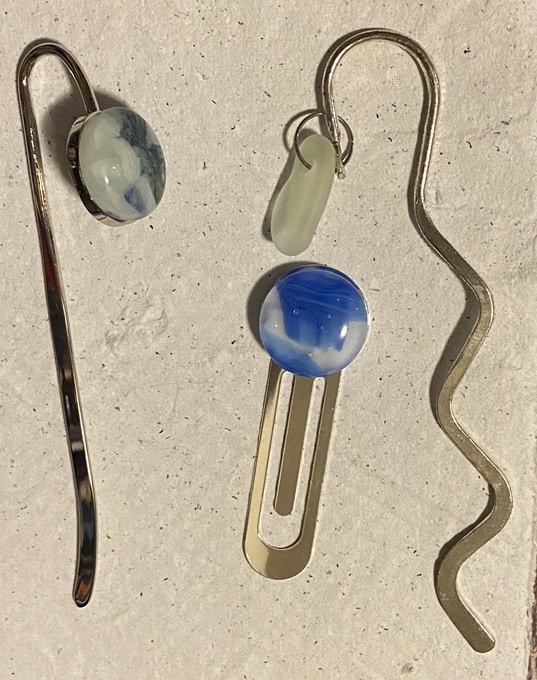

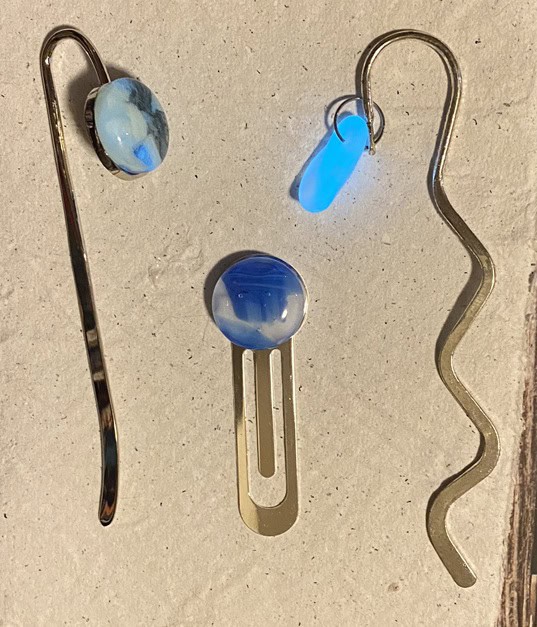
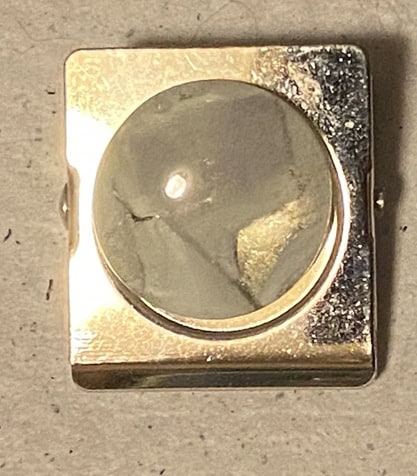
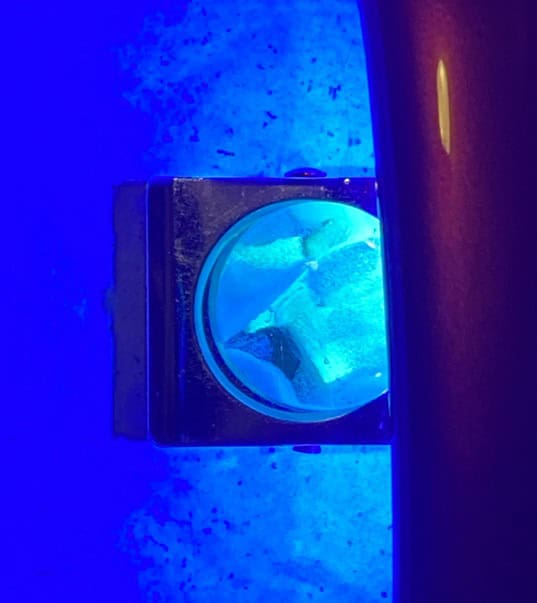
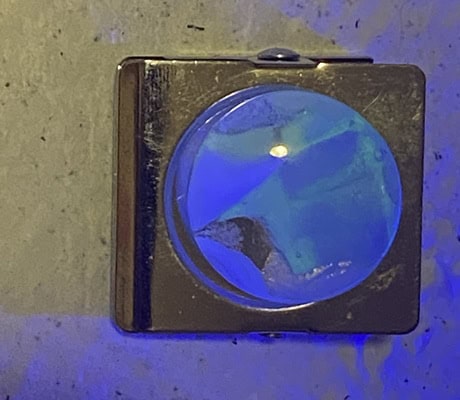
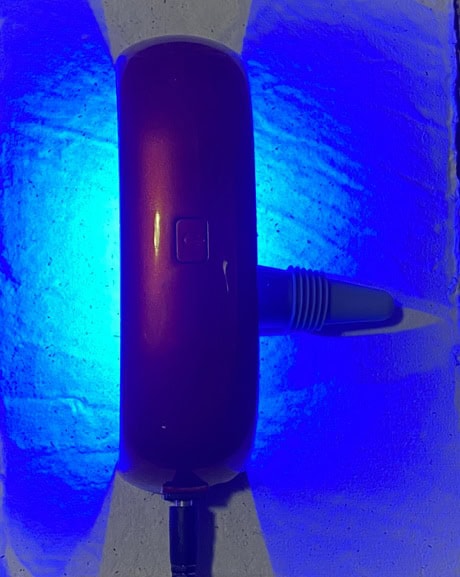
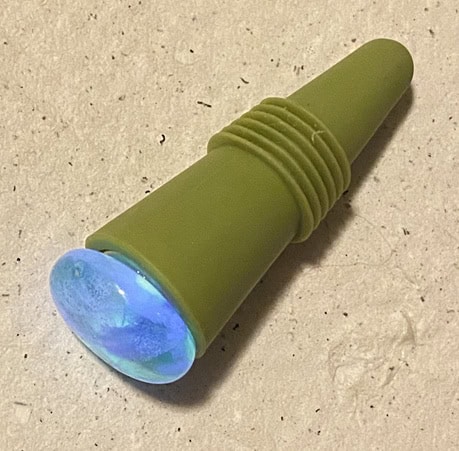
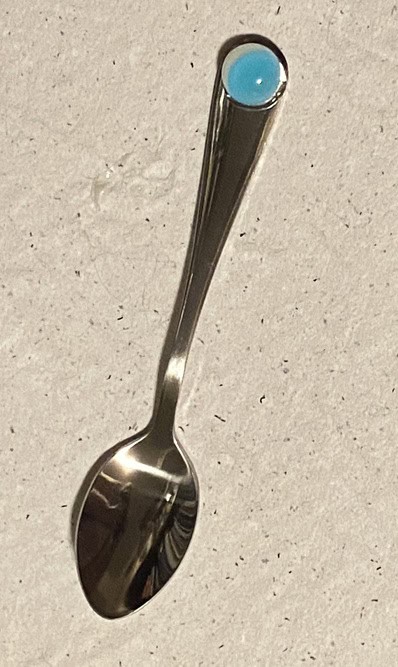
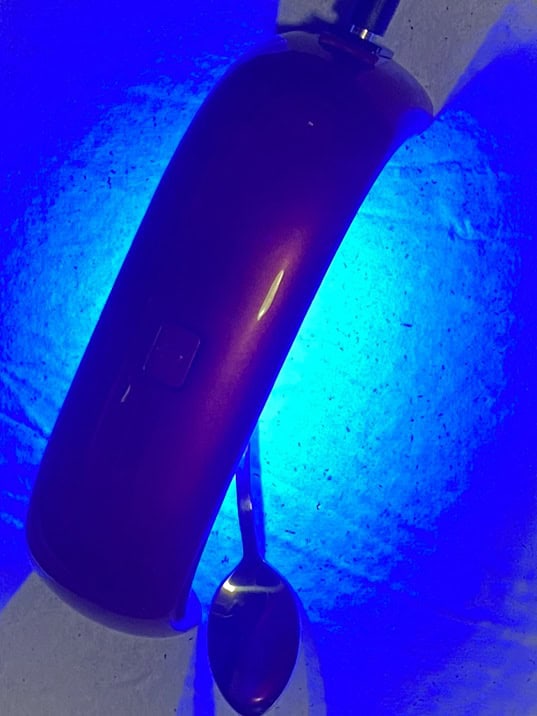
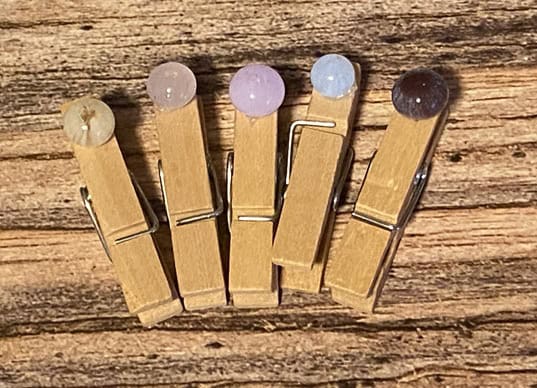
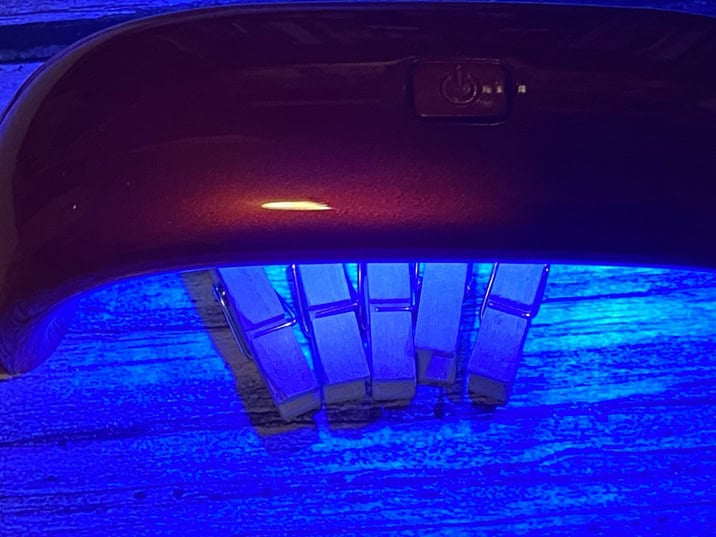
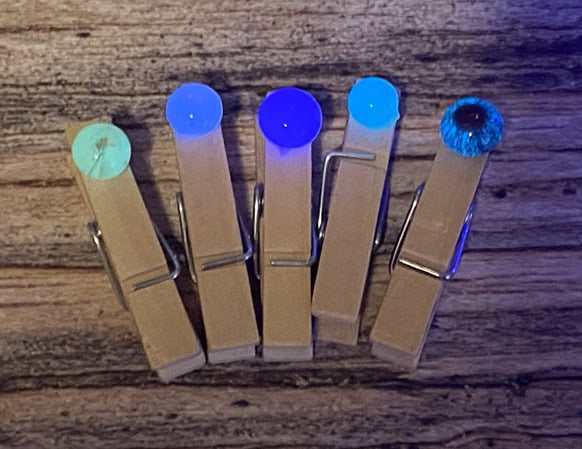
I also had fun experimenting with glow stringer, frit, and powder—each offering its own unique challenges and creative potential. These forms can be a bit more temperamental than sheet glass. The stringer is delicate and can be tricky to handle, while frit—and especially powder—require careful planning and precise firing to really shine. But with a little patience and testing, they can produce some truly dazzling results. I used these glow materials to create a variety of sample pieces, including a hair band, eyeglass holder, rings, lapel pins, nail files, and even snaps! In the photos below, you can see how each piece looks before the UV light hits, during the glow-up moment, and that subtle afterglow that lingers once the blacklight fades. So very cool—and so rewarding to see them light up!
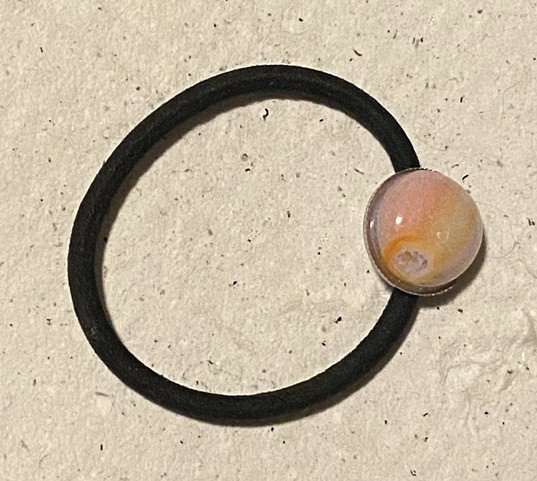
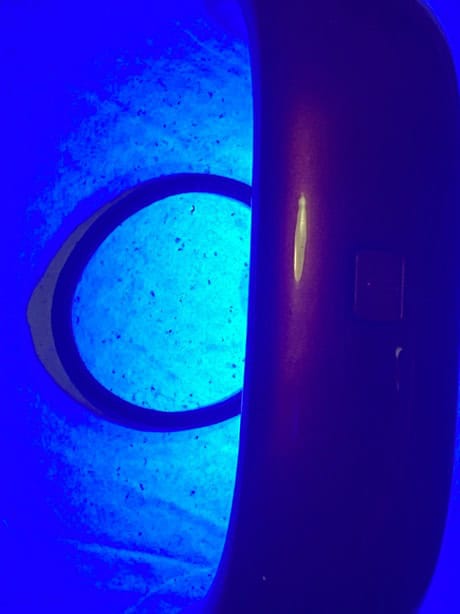
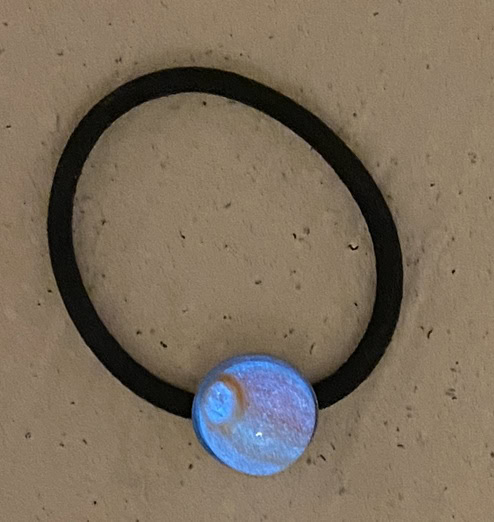
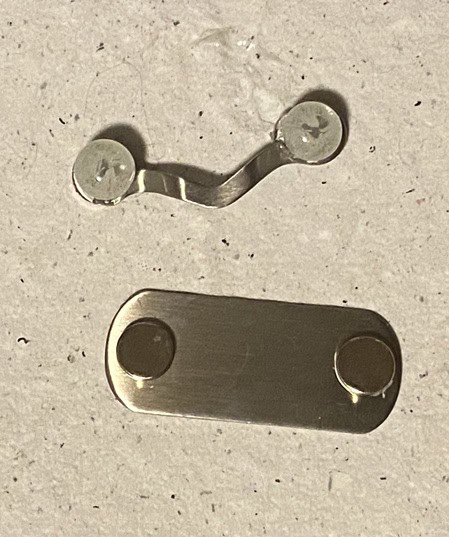
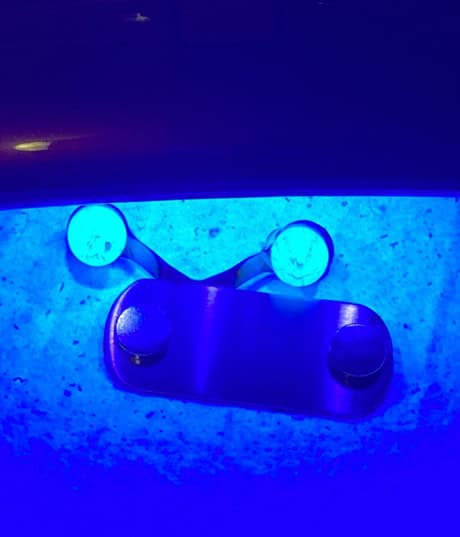
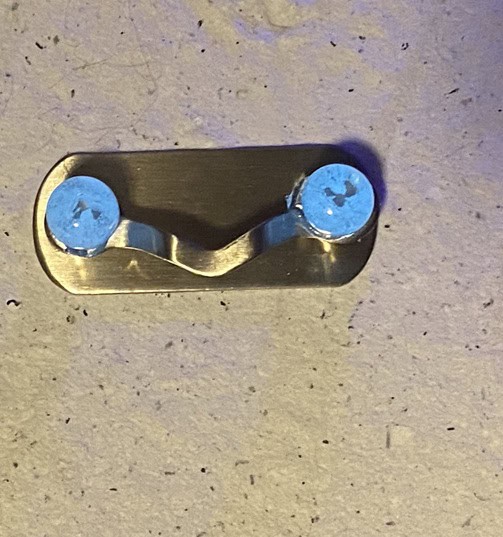
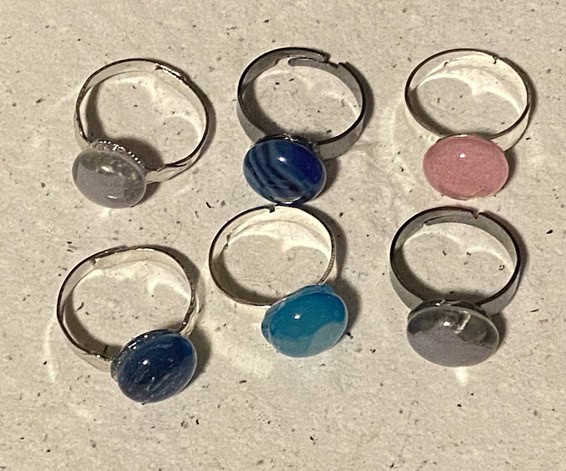
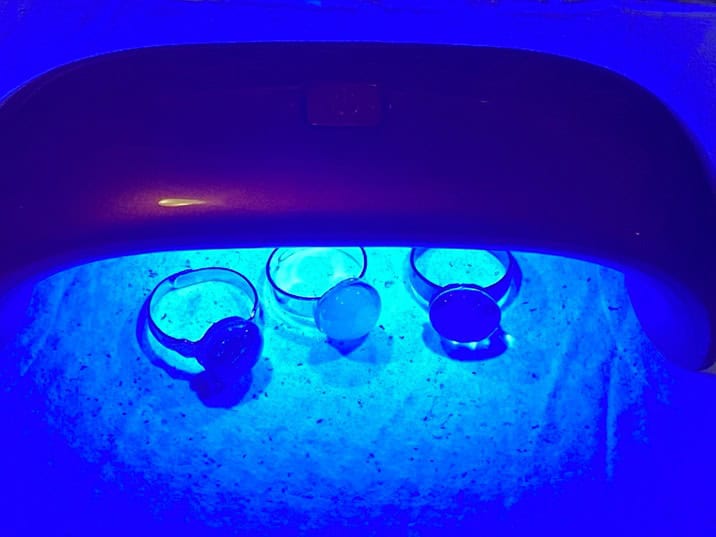
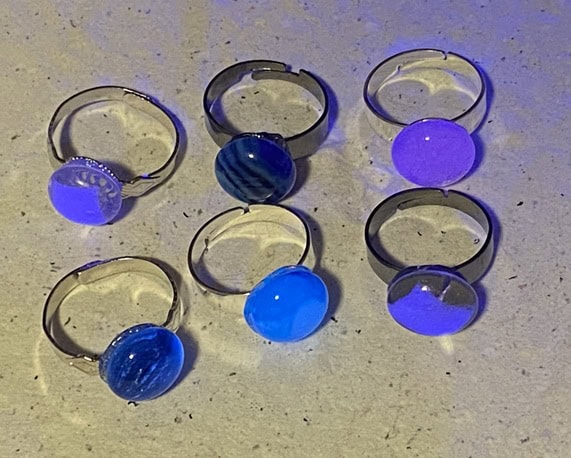
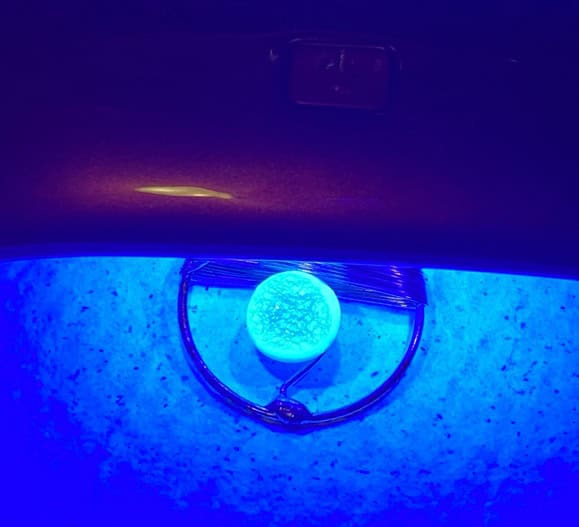
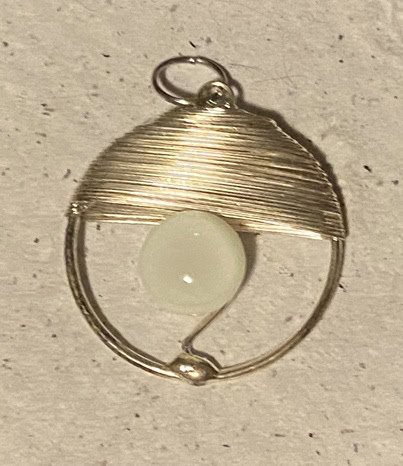
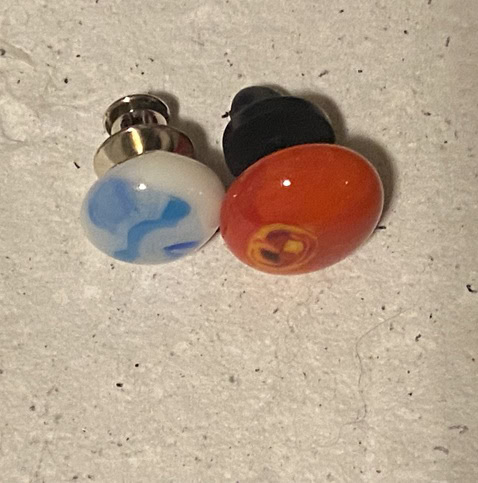
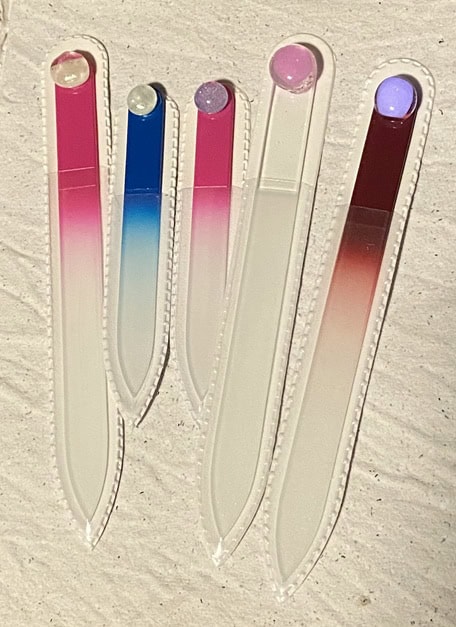
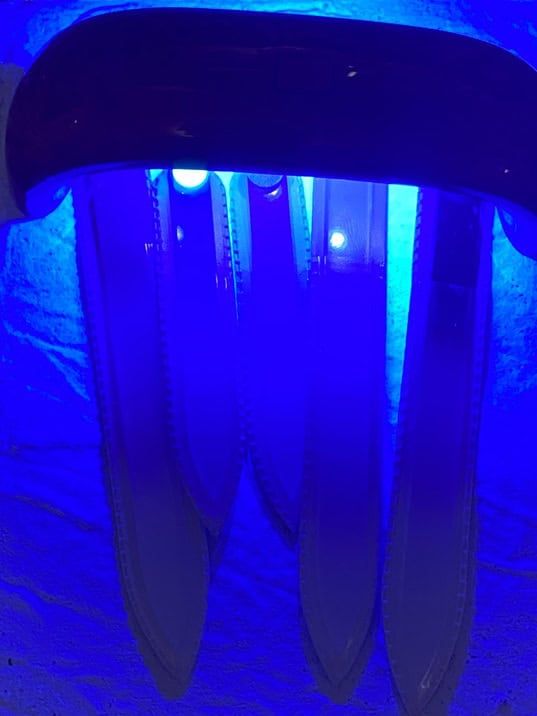
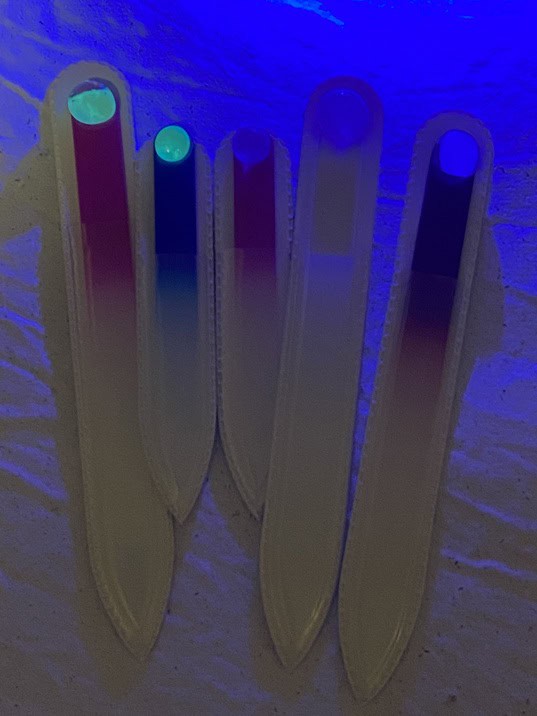
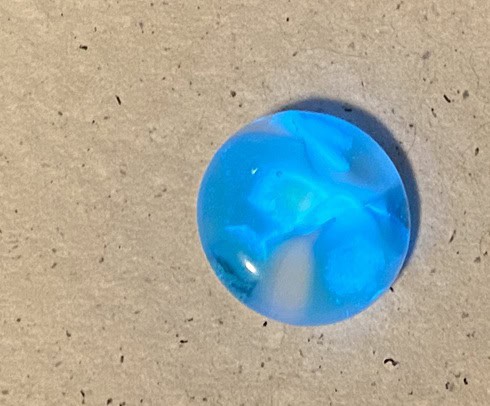

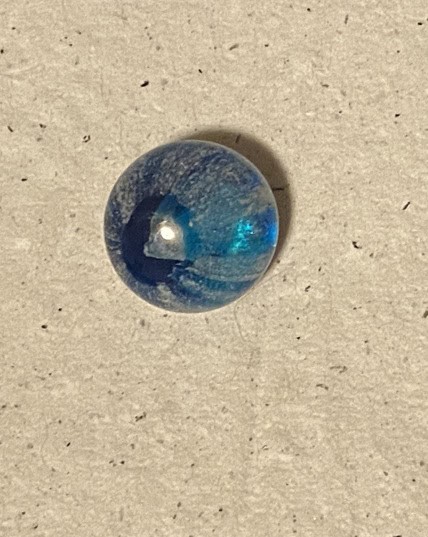
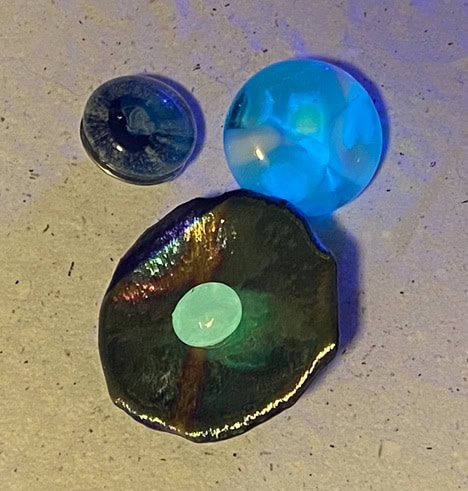
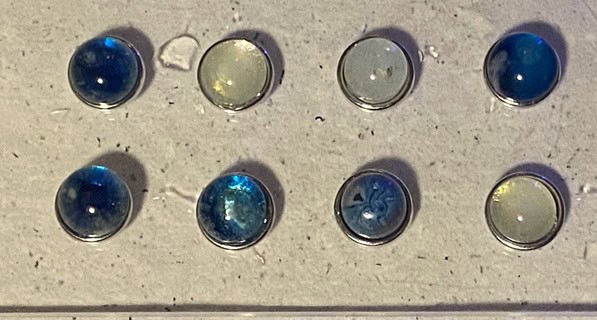
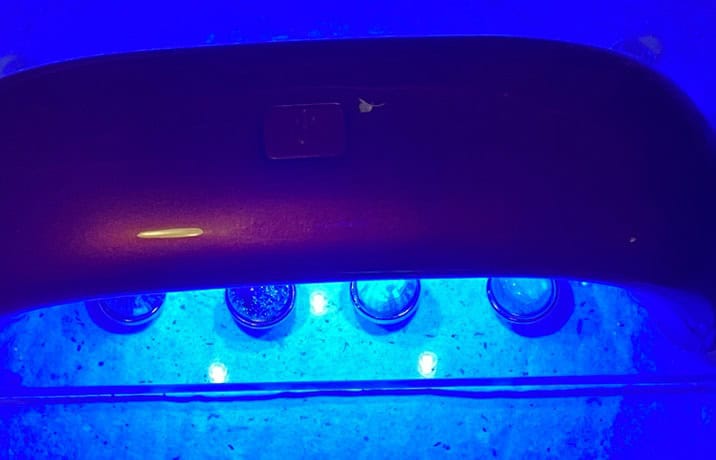
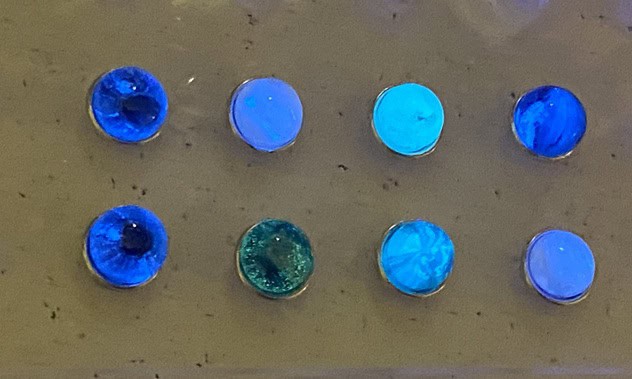
I have to admit—I definitely went a little overboard with the glow dots! Once I saw how fun and easy they were to make, I just couldn’t stop. I ended up creating a whole collection of earrings—everything from simple posts to playful dangles—and each pair has its own little glow-in-the-dark personality. I even made a glow ring that I wear everywhere, and it never fails to make me smile when it lights up after a bit of sunlight exposure. There’s something so joyful about jewelry that quietly soaks up the light during the day and surprises you with a gentle glow when night falls.
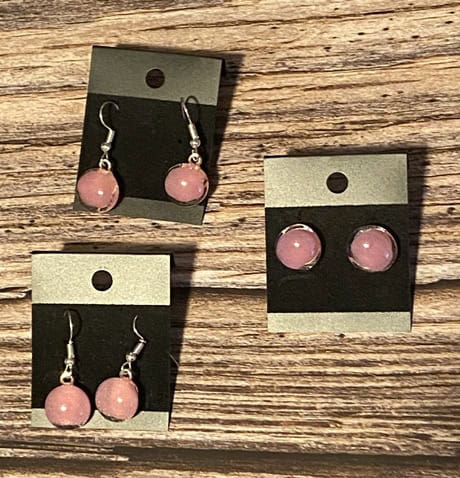
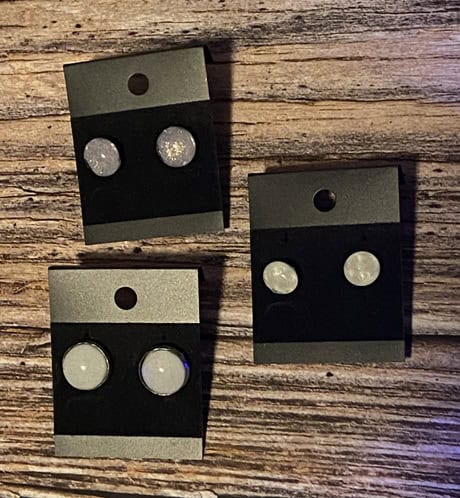
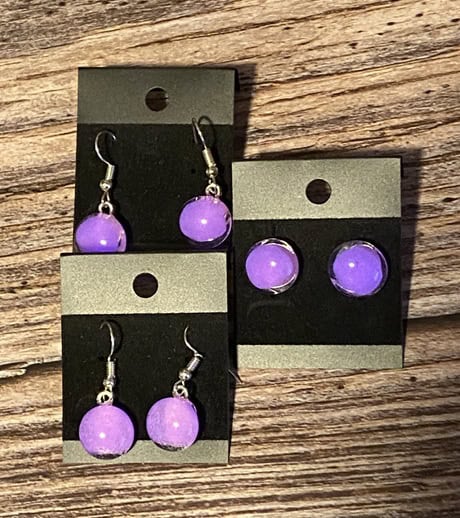
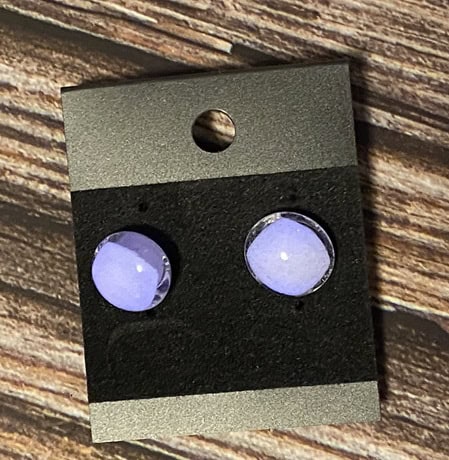
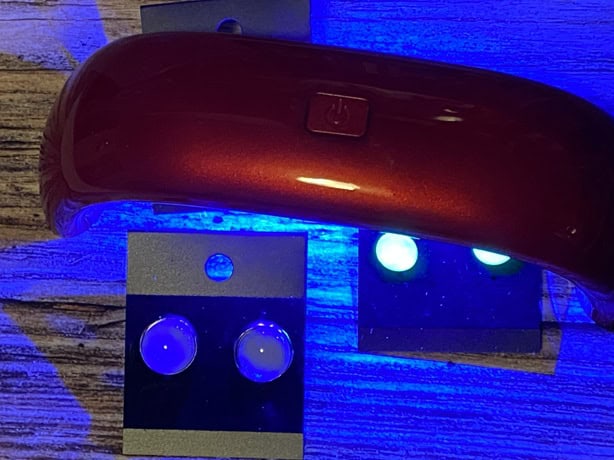
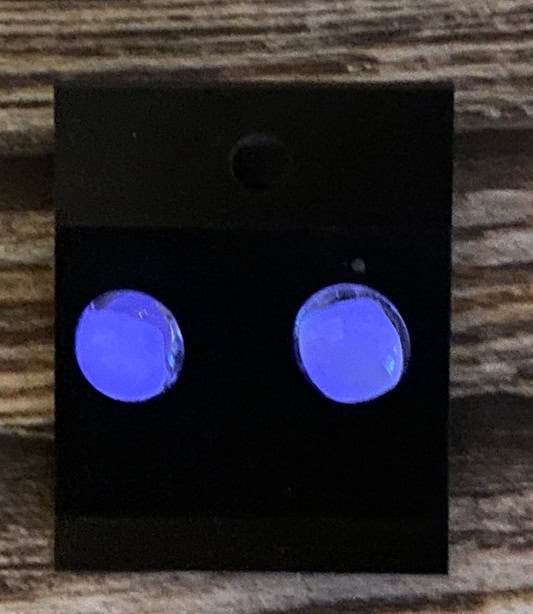
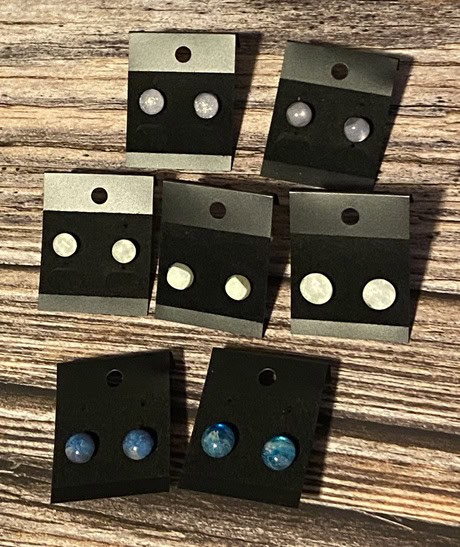
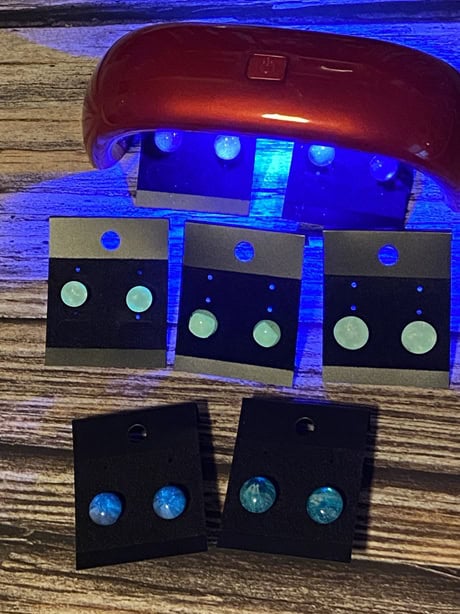
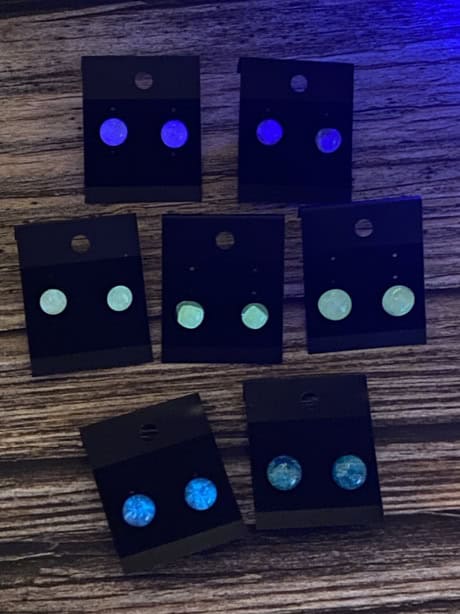
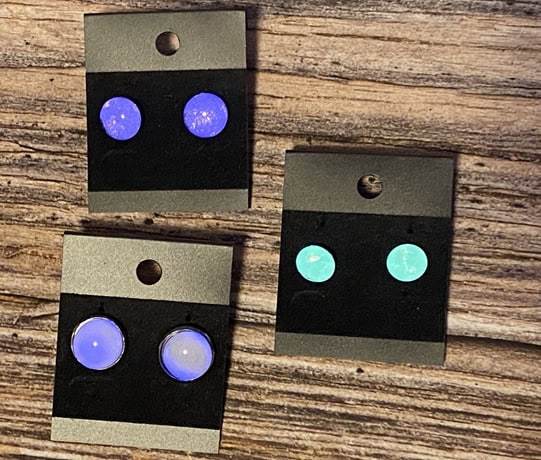
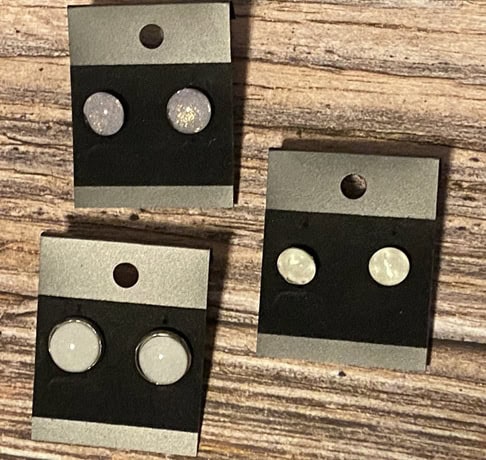
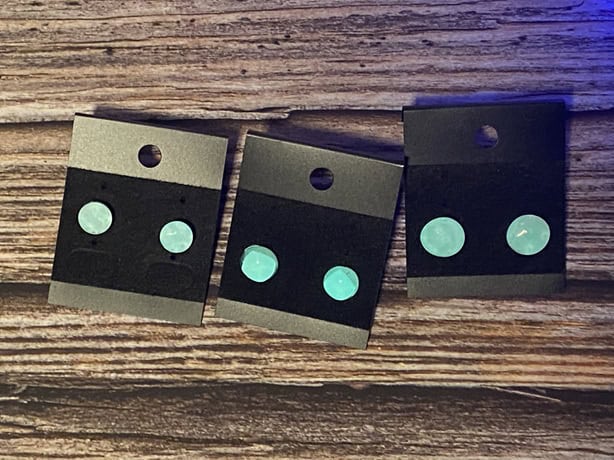
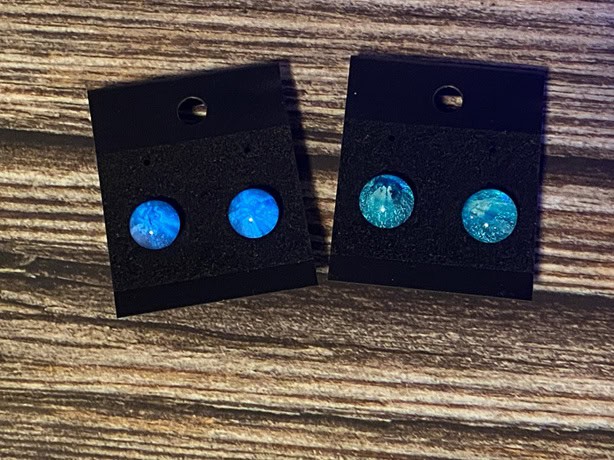
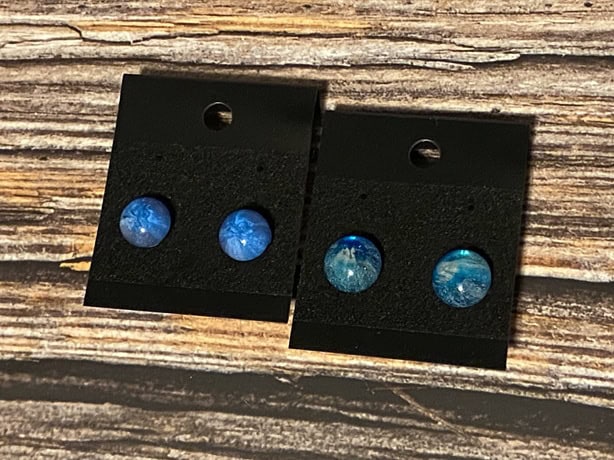
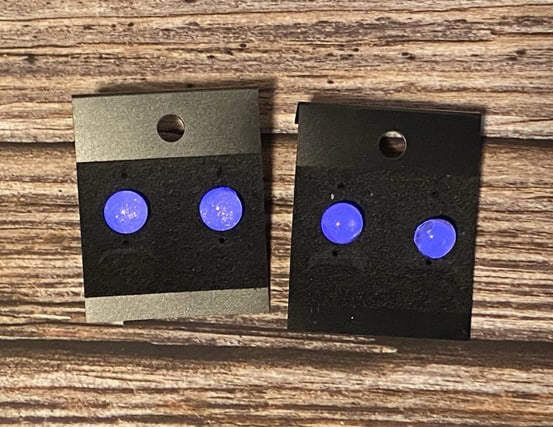
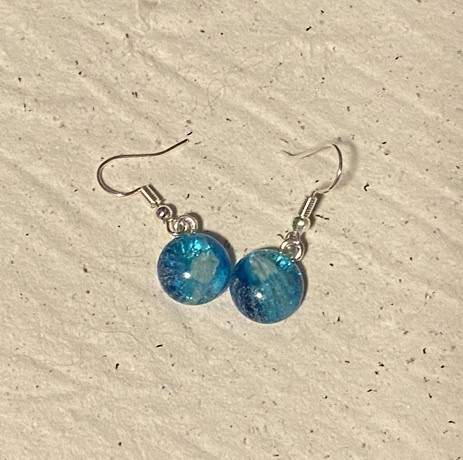
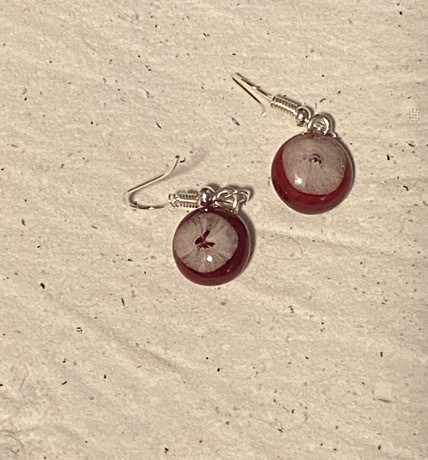
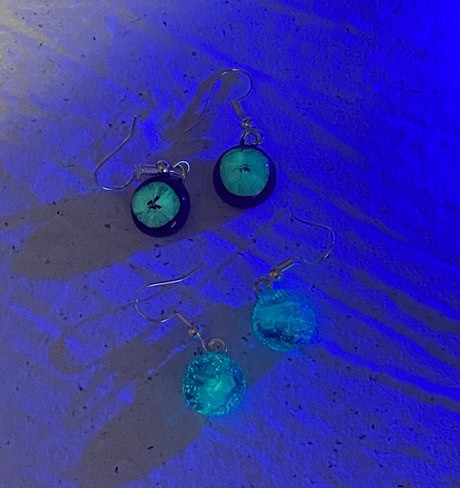
And of course—pendants! I couldn’t resist making a handful of glow-in-the-dark pendants, and I’m absolutely thrilled with how they turned out. There’s something truly magical about jewelry that quietly charges in the daylight and then softly glows after dark. It’s like wearing a tiny, glowing secret—elegant by day, enchanting by night. Each one is a little piece of luminous art, and I love how they surprise people when the lights go down.
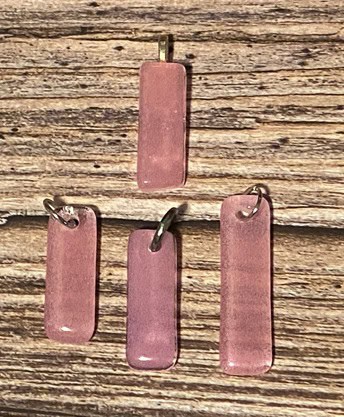
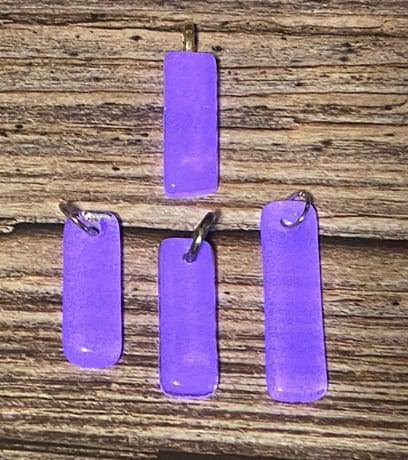
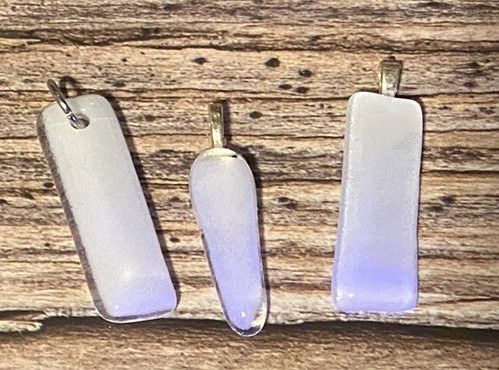
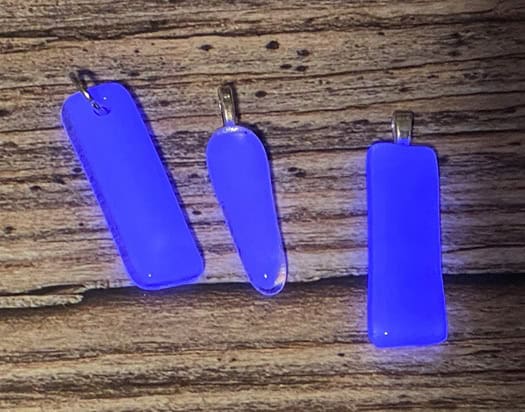
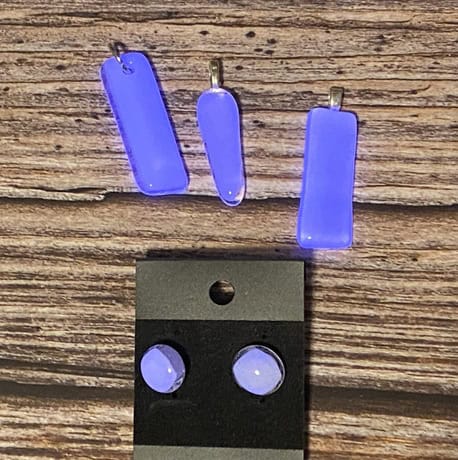
As for the rest of my glowing stash? I’ve still got plenty of fused glass glow dots waiting for their moment to shine. What will I create with them next? Well… you’ll just have to stay tuned! Be sure to follow along in my newsletter to see where these little luminous treasures end up—I promise more glowing goodness is on the way!
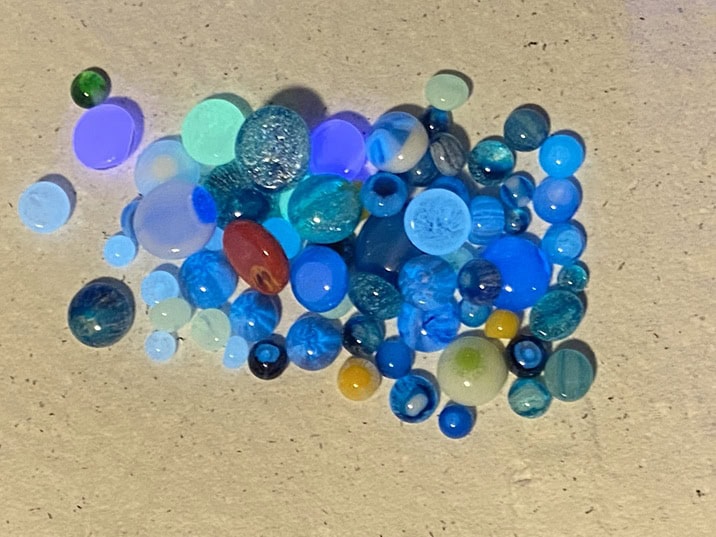
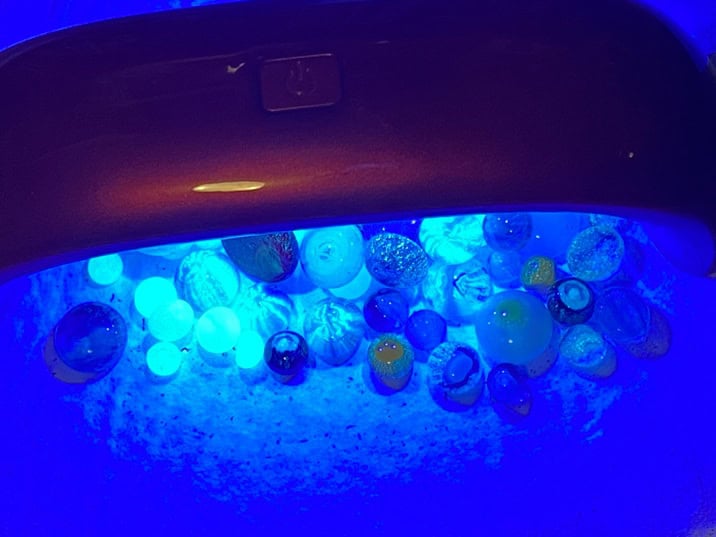
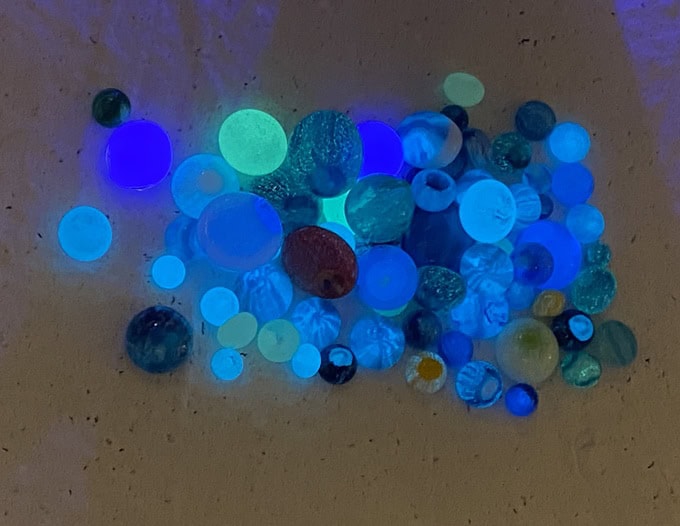
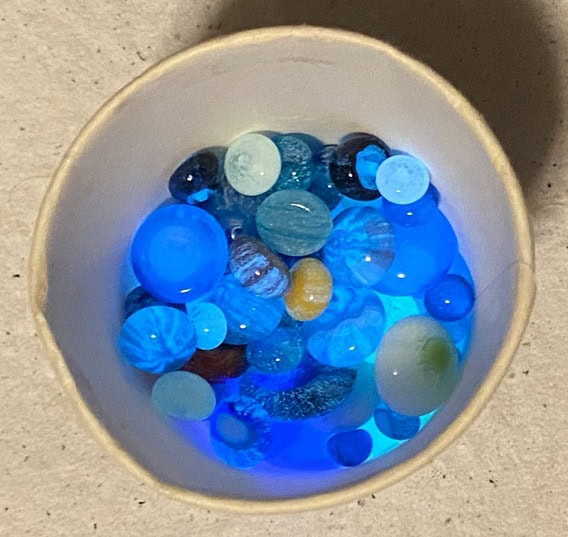
Working with both uranium glass and glow glass has been such a fun and fascinating adventure. Each material brings its own unique magic—uranium glass with its rich vintage charm and mysterious blacklight glow, and glow glass with its modern, self-charging brilliance that lights up the night. Whether I’m repurposing an old uranium plate into elegant pendants or experimenting with glow dots and powder to create playful earrings, I’m reminded just how much I love the intersection of science, art, and a little bit of wonder. These glowing projects have truly added a new layer of light—and joy—to my creative process.
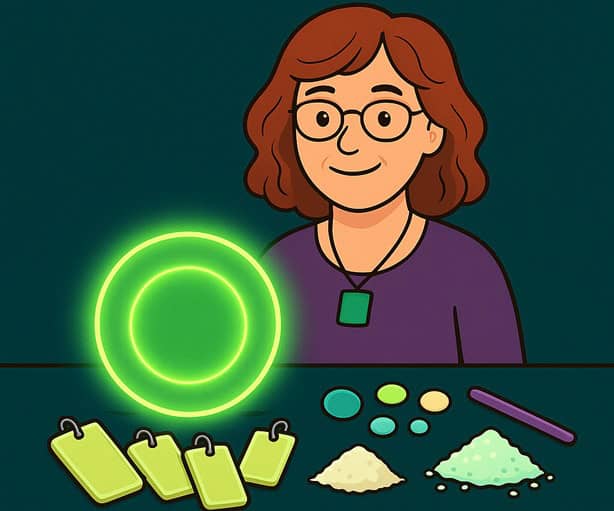

If you would like to see more of my fused glass work, please refer to my website Elegant Fused Glass by Karen. If you get a chance, check out all my site and my Elegant Fused Glass by Karen YouTube. If you would like to stay abreast of what I’m up-to and learn a little more about jewelry, check out our newsletter. It is published the last day of each month.
Keeping my kilns warm,
Karen

